Are you traveling to Germany on our Christmas markets tour? Looking for everything you’ll possibly need to know about visiting Germany solo as a woman?
In this article you will find a brief history of the country, tips for the best time to visit, travel essentials and entry requirements, health and safety advice, a list of the best places to see, and some local culture, from basic German vocab to the best foods and drinks to try.
Lastly, understand and immerse yourself in some German history and culture with our reading list, movies and shows to watch.
Looking for what to pack? You can find our Central European packing list here.
The history of Germany
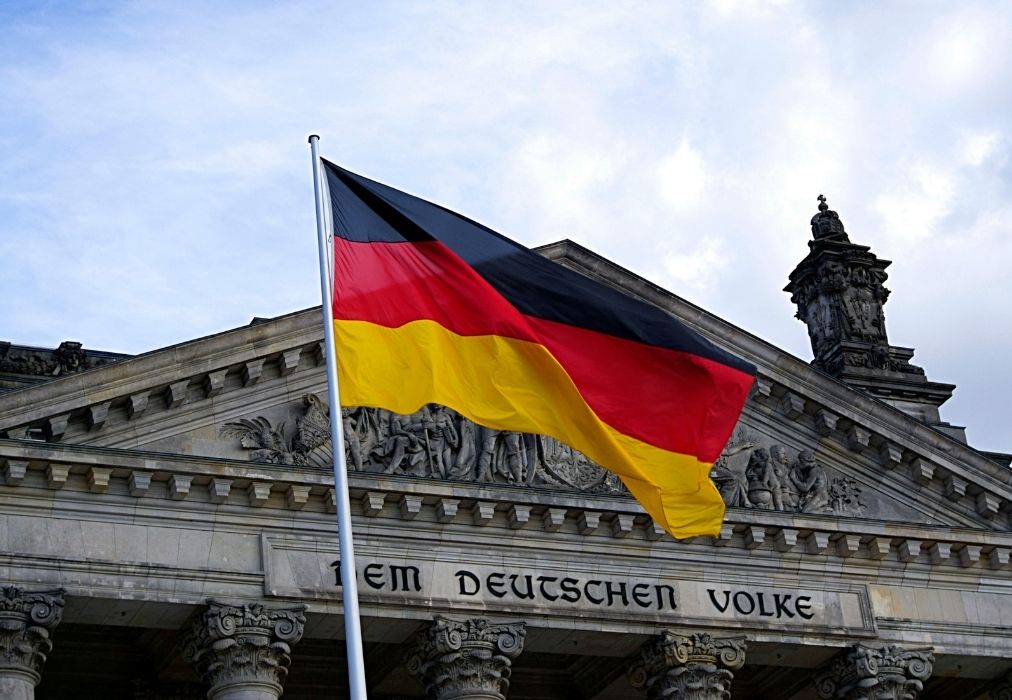
Before we get started, and before you travel to Germany, it’s incredibly important to understand the long and complicated history Germany has, and the role the country has played in some of the world’s most important events.
By visiting Germany with your eyes open, you’ll be able to better understand and appreciate the complexities of the country, and everything that has led Germany to being the country it is today. To skip right to our travel tips for Germany, click here.
Germany’s history begins during the Bronze Age, when Celtic and Nordic cultures started to migrate to the northern regions of present-day Germany. German tribes became a threat to be reckoned with, as Julius Caesar would find out at the Battle of Teutoburg Forest in 9 CE when Arminius defeated three of Caesar’s Roman forces.
After that, the Roman Empire established its borders around the Rhine, and Germans and Romans learned to coexist and trade.
The Frankish Empire rose to power and became one of the most powerful realms in Western Europe under the rule of Charlemagne in the 8th and 9th centuries, laying the foundations for modern France and Germany, and playing a crucial role in the spread of Christianity.
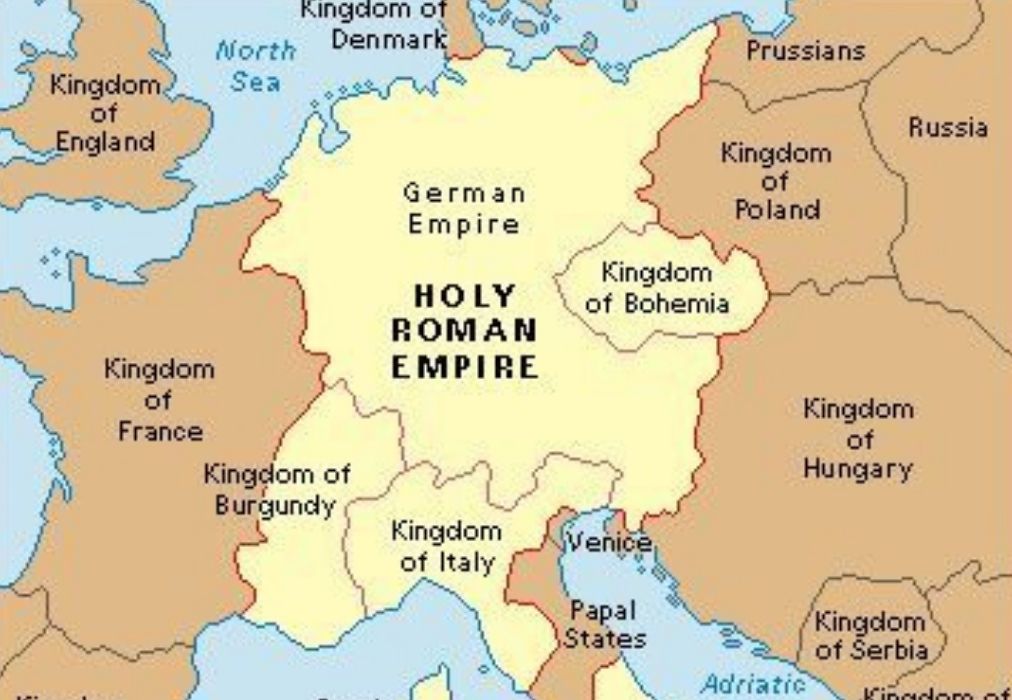
Charlemagne divided up his empire, and the German portion became what is known as The Holy Roman Empire in 800 when Pope Leo III crowned him as Roman Emperor, reviving this title in Western Europe almost 300 years after the fall of the Ancient Roman Empire. This is the beginning of Medieval Germany.
The Empire lasted for almost 1,000 years until the Napoleonic Wars, but only started to be called such in the 13th century, although it is understood that it was the same Empire since 800 because of the concept of inheritance. Until then, it was also referred to as the Whole Empire, Christian Empire or Roman Empire.
During the 10th to the 12th centuries, the Empire thrived and expanded geographically. In 1250, the death of Emperor Frederick II Hohenstaufen marked the end of the centralization of the Empire and its fragmentation into independent Princely states.
On one hand, this time saw extreme famine and the black death, but on the other, it laid the groundwork for a time of art and innovation with Johannes Gutenberg’s printing press in 1440 allowing for ideas to be shared faster, especially religion.
Protestantism was created by Martin Luther after Pope Leo X in the early 1500’s started campaigning for Catholics to raise money for the church under the impression that if they did, their loved ones would suffer less in the afterlife and go to heaven.
Many of those in power in Germany, like princes and dukes, did not like being limited by the Empire and the church, and took the opportunity to side with Luther to gain more power and money.
Prussia became the first state to officially adopt protestantism and focus less on religion and more on who would control the majority of Europe if not the church. This resulted in the Thirty Years War (1618-1648), and millions of people were killed in the process.
Prussia became a Kingdom around the same time German arts and culture was booming, especially in music, with famous artists like Bach, Beethoven, Schumann, and Strauss all rising to the scene.
Napoleon dismantled The Holy Roman Empire in 1806, and with the industrial revolution bringing huge political, societal and economical shifts, revolutions and rebellions started to pop up advocating for reform and a union of German states.
Many emigrated to the United States at this time, but the modern day German Empire was officially born in 1871 under Otto von Bismarck and Prussian rule.
Hopping on the metaphorical and literal trains of the Industrial Revolution, Germany became a hub for innovation and industrialization, seeing the creation of the automobile, motorbike, diesel engines and X-rays.
With Germany becoming a powerhouse politically, it looked towards Austria-Hungary and Italy to enter into an alliance where all three promised to help each other if attacked. A few decades later, Franz Ferdinand, the heir to the Austrian throne was assassinated in 1914, and World War I commenced.
With total support from Germany, Austria declared war against Serbia, and caused a violent chain reaction of mobilizations and declarations of war from major European powers like Russia, Belgium and the British Empire, which escalated the situation into a blown out global war.
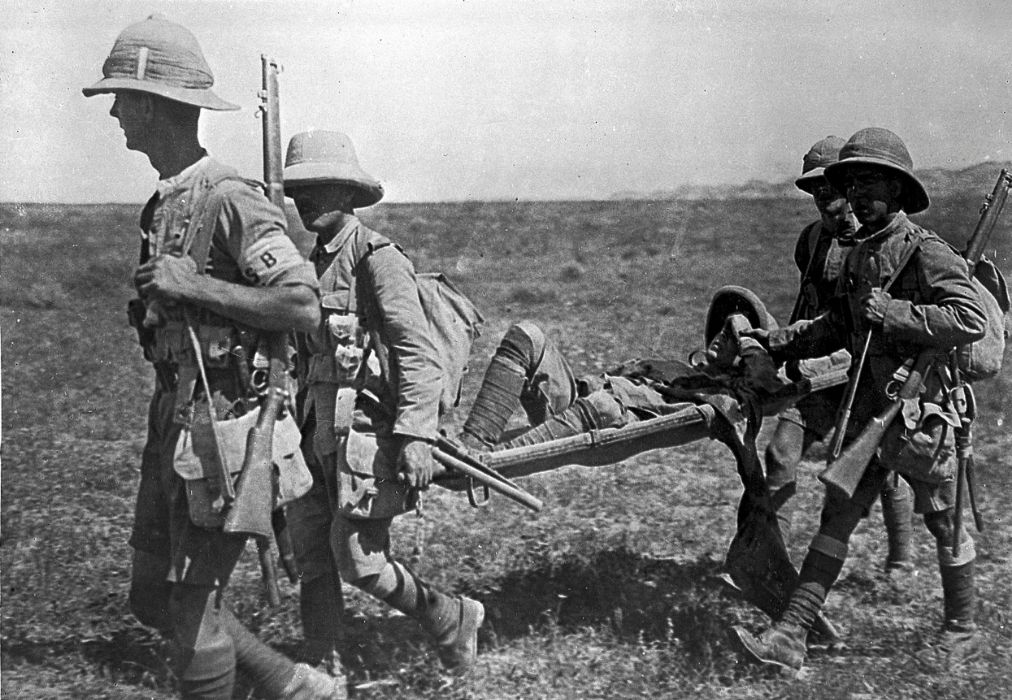
After four years of violence, and around 20 million deaths, Germany went up against France, Britain, Belgium, and the United States, and lost, resulting in the signing of an armistice, and the end of World War I.
The Treaty of Versailles in 1919 placed blame on Germany, and the state was forced to give land back to both France and Poland, on top of the limitation of 100,000 troops and the military’s full restriction from having air force, submarines or tanks.
Germany was also required to pay 132 billion gold marks ($500 billion today) in reparations to the Allied Forces for the damage caused during the war. This debt wasn’t paid off until October 3, 2010.
The 1920s were hard, and Germans experienced significant political and societal distress, and an economic crisis due to the reparations and the 1929 Wall Street Crash, which resulted in the extremist and revolutionary mindset that led Adolf Hitler to gain the popularity he did in the 1930s.
Hitler quickly became the leader of the National Socialist German Workers Party, advocating for the abandonment of the Treaty of Versailles, and expansion of German territory.
Their ideology was deeply rooted in anti-semitism, placing blame on the Jews for the economic state of the country, creating a common enemy and allowing Hitler and the party to gain quick political and dictatorial traction.
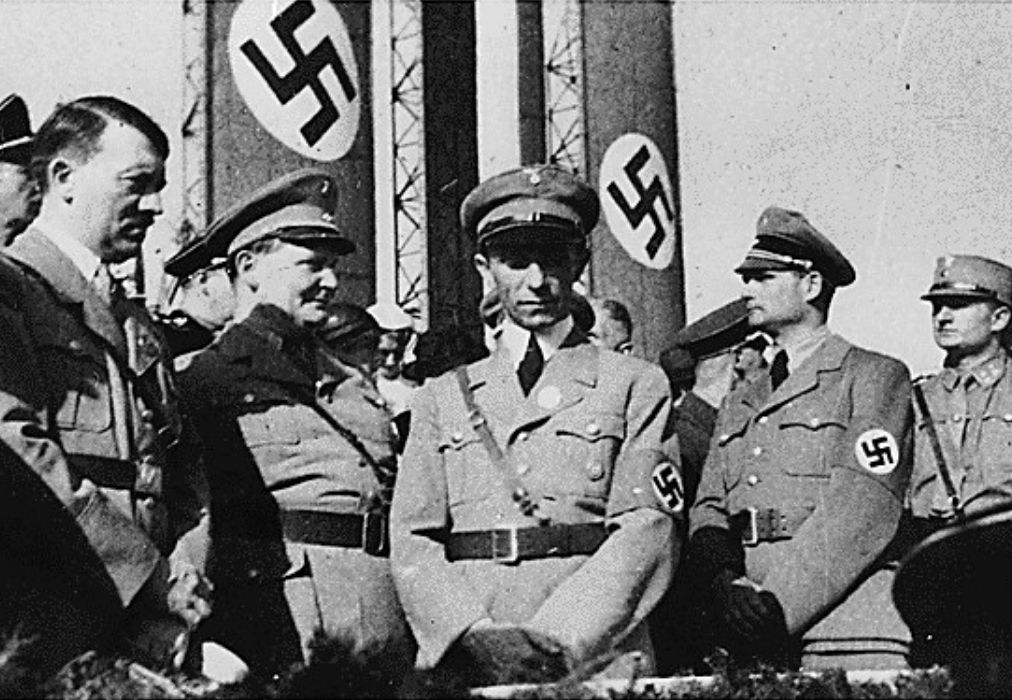
World War II officially started in 1939 when Nazi Germany invaded Poland, and Britain and France declared war on Germany.
For the next six years, Germany moved towards occupying most of Europe, and Jews and other “undesirables” like the Poles and Romani people, as well as Soviet prisoners of war, were put in concentration camps which resulted in the brutal and unprecedented death of approximately 6 million Jews and at least 5 million non-Jewish victims.
Hitler and Germany eventually failed in its attempt to invade more of the Soviet Union, and this failure allowed the French, British and American forces alongside the Soviets to end the Nazi Regime and the Third Reich.
The Second World War caused the death of approximately 75 million people globally with battles across continents from Europe to Asia and the Pacific.
After the war, Germany was split between the Allied Powers, with East Germany being controlled by the Soviet Union, and West Germany belonging to the Western Allies of the United States, France and Britain. Berlin, the capital, was also split into divided power between the Allies.
From 1945-1990, Germany and its citizens were divided by communism, with the Berlin Wall being built in 1961 to immediately and completely stop East Germans under Soviet jurisdiction from fleeing to West Berlin.
After nearly 30 years of complete separation and 140 civilian deaths trying to cross the wall from the German Democratic Republic’s East Germany to West Germany, the Berlin Wall fell with the fall of the Soviet Union, and East and West Germany were reunited again.
Germany today is one of the world’s richest countries, and is seen at the forefront of technological and industrial innovation on a global scale.
Playing a leading and founding role in the European Union focused on democracy, environmentalism and human rights, Germany has created a country for citizens to thrive with a high standard of living and a consistently high ranking on the Human Development Index allowing for female visitors to feel safe while solo traveling.
Though the effects of the country’s division between East and West Germany can still be felt today socially and economically, the country has rich and interesting traditions and culture that can be especially enjoyed in Bavaria.
Quick facts about Germany
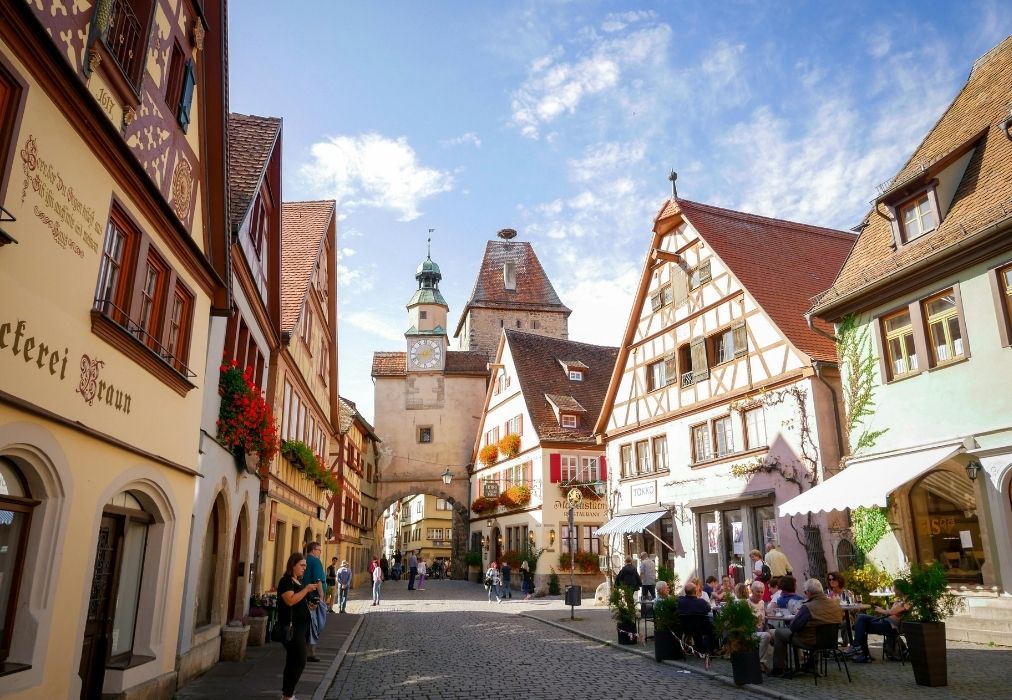
With Germany’s heavy history outlined, let’s talk about some of the interesting and fun facts about this country:
- Castles: There are more than 20,000 castles (or Schloss) in Germany. With such a rich history of dukes, princes, bishops, and lords, it’s no surprise that the country is dotted with some of the world’s most gorgeous castles, like the Neuschwanstein Castle which is rumored to be the inspiration for Disney’s Sleeping Beauty Castle and found in several of its amusement parks.
- Architectural prowess: Cologne’s Cathedral is the second-largest religious structure in Germany, behind the Ulm Minster, but it holds the record for longest construction project, taking 632 years to complete. Despite heavy bombing during World War II, the cathedral’s massive architecture withstood the destruction and remained standing.
- Beer: Germans sure love their beer and have 7,000 different kinds to enjoy from over 1,300 breweries. But did you know that the country has been regulating its purity since 1516? The law to regulate the ingredients that can be used to make German beer was passed by Duke Wilhelm IV and remains in place till today.
- Daylight savings: Germany was the first country to implement Daylight Saving Time during World War I to conserve energy by making better use of daylight hours and reduce the need for artificial lighting and fuel consumption.
- The hamburger is named after the city of Hamburg: The name comes from the “Hamburg steak,” which was a popular dish in the city during the 19th century consisting of a seasoned, minced beef patty, often served without a bun. From there, it jumped to the US with immigrants who brought their dish over and a bun was added later to make the consumption more easy on the go.
- Germans love their bread: There are over 300 different types of bread and each household is estimated to consume 56 kilos a year, that is just over a kilo per week. Almost 10,000 master bakeries and 35,000 shops make bread easily available to everyone on a daily basis.
- Michael Jackson: Munich is home to a makeshift memorial for Michael Jackson on the statue honoring Renaissance composer Orlando di Lasso after the King of Pop’s death in 2009. Though the shrine was taken down by authorities during the pandemic, the tribute reappeared and is still there today. It happens to be located across the street from the Bayerischer Hof Hotel which is where we stay during our Christmas markets tour, and where the music star stayed himself.
- Oktoberfest: Germany’s most famous celebration is actually celebrated mostly in September. 6.5 million liters of beer were consumed at Munich’s Oktoberfest in 2023 by the 7 million visitors. That’s just under a liter of beer per person – Prost!
- Superstitious: Speaking of beer, Germans have a superstition requiring you to stare the other person in the eyes if you are to clink glasses – otherwise you’ll have 7 years of bad luck.
- Christmas trees: The iconic holiday tradition of decorating a christmas tree in your home started in Freiburg, Germany, when a guild started to decorate trees with apples, flour paste wafers, tinsel and gingerbread. It’s no wonder that Germany is considered one of the best places to explore this and other Christmas traditions.
- Speed: Some parts of Germany’s highways, known as Autobahn, have no speed limits. Time to test that powerful BWM you just bought.
- Fanta: The origin of this bright orange fizzy drink can be found in Nazi Germany when Coca-cola syrup ran out due to import restrictions.
- Country of inventors: Germany has given the world many famous and impossible-to-live-without inventions such as gummy bears (Hans Riegel from Haribo), the printing press (Gutenberg) and the Aspirin (Bayer).
Germany travel tips
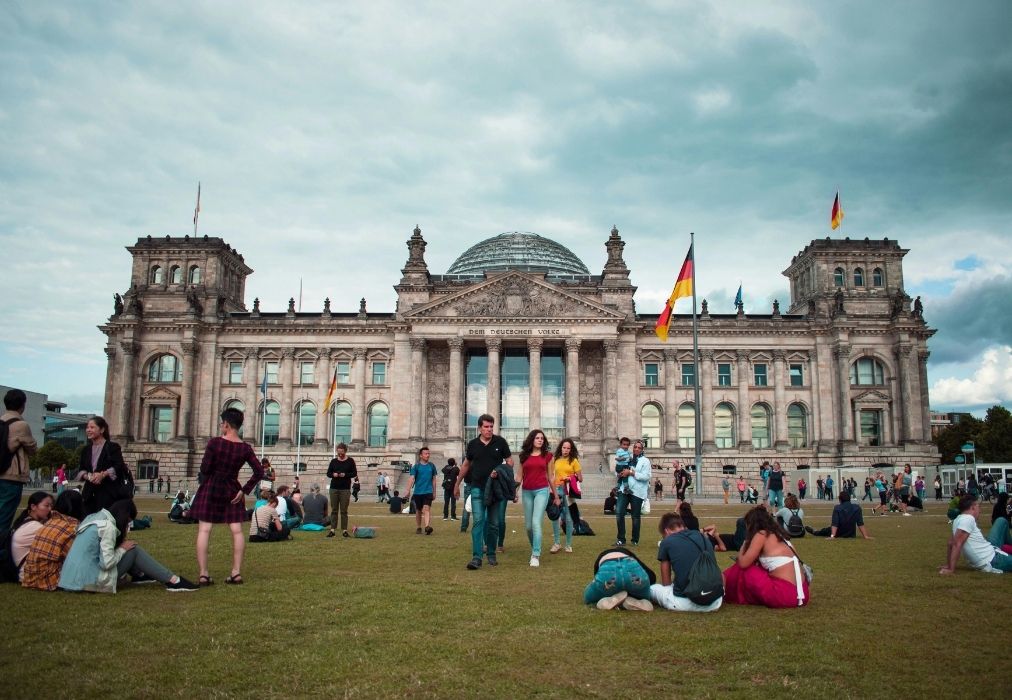
In this section we want to share general Germany travel tips to help you plan your trip:
When to visit
The best time to visit Germany depends on your preferences for weather, activities, and crowd levels but summertime sees the highest amounts of visitors as winters are long and bitterly cold throughout the country.
Here’s a breakdown of the different seasons:
Spring (March to May)
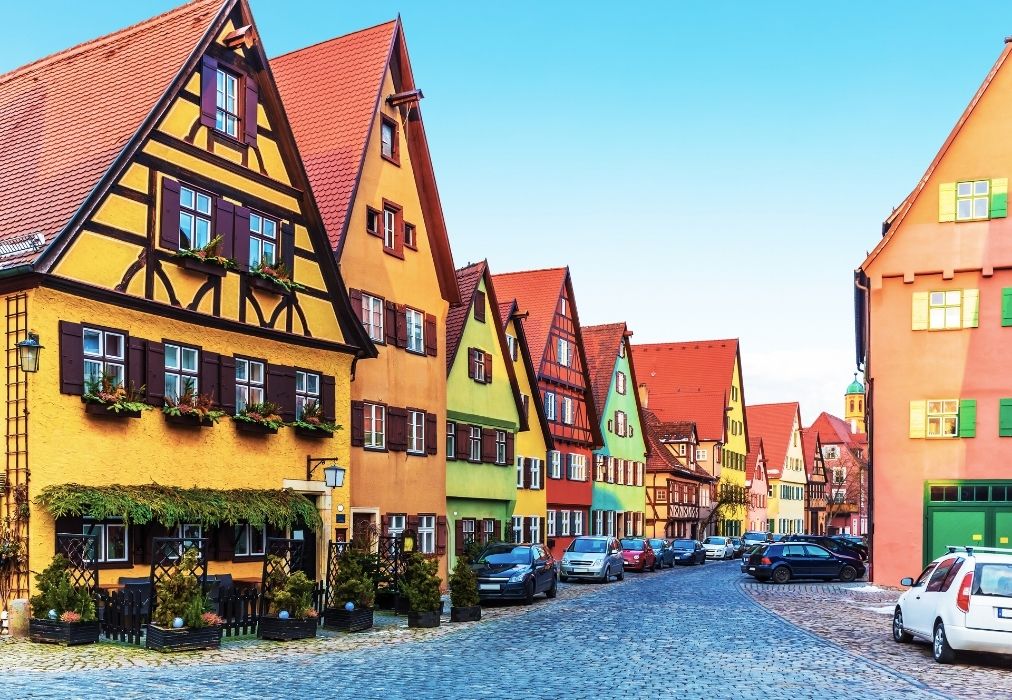
Shoulder seasons in Germany are a great time to visit, and May is probably the perfect time. You’ll get ahead of the summer crowds, and have an easier time booking hotels, activities and transportation.
The weather can be slightly unpredictable during the Spring though, ranging from -2 C in Munich in March all the way to 21 C in Berlin in May, so it’s important to pack accordingly on your trip. You might catch some snow in Munich and Bavaria in March but otherwise the chances of rain are relatively low across the country with an average of 8 days of rain per month.
What makes this a perfect time to visit Germany is that the sun still shines for a minimum of 10 hours a day, giving you lots of time to enjoy the end of Germany’s ski season, and the start of its hiking and cycling season – if you’re the outdoorsy type.
There’s a lot of things to do to enjoy the spring, or Früling:
- Frülingsfest (Spring Festival): If you want to experience the ambiance of Oktoberfest without the insane crowds and prices that come with the world-famous festival, Frülingsfest is for you. With endless beer tents, amusement rides, live music and all the traditional Bavarian outfits, you’re sure to get the full German experience.
- Osterfest (Easter Festival): With Germans creating stories about the Osterhase (Easter hare, aka Easter bunny), it’s no surprise that they love to celebrate Easter. Make sure to visit Nuremberg, where you can find one of the biggest Easter markets in Germany and stock up on all the artisan and handcrafted decorations and treats.
- Maifeiertag (May Day, International Workers Day): May Day is a public holiday that celebrates the beginning of spring and involves enjoying lots of traditional music, dancing and local foods. Big celebrations happen in Munich, Berlin and in Baden, where a maypole (Maibaum) is raised to celebrate the local community.
Summer (June to August)
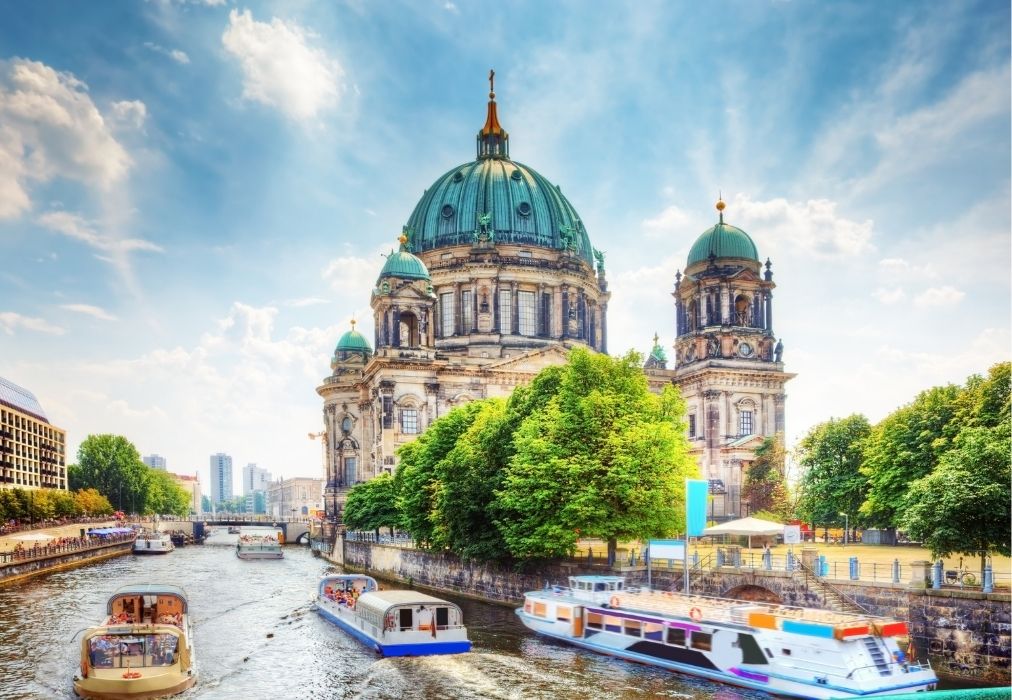
Summer in Germany is where tourism reaches a peak. The weather is warm, the days are long, and for the most part, rain stays low.
However, as Germany is the 6th largest country in Europe, the weather can vary quite drastically between the northern and southern regions. Munich in the south sees a much rainier climate than what is experienced in places like Berlin, Hamburg or Cologne which are in the north.
Summer (Sommer) is a great time to take advantage of all of the outdoorsy activities this country has to offer such as hiking, biking, swimming, boating, and park relaxing in the two-thirds of the country that are covered in forests.
Summertime also sees various festivals and celebrations:
- “Kieler Woche” (Kiel Week): As the largest sailing festival in the world, and Northern Europe’s biggest festival, Kiel Week in June sees races, concerts and markets with millions of attendees annually.
- Rhein in Flammen (Rhine-in-Flames): On five days throughout summer, towns all over Rhineland-Palatinate celebrate with boat parades, festivities and, the celebration’s namesake, fireworks all along the Rhine.
- Bachfest Leipzig: This 10-day festival in June celebrates the work of legendary composer Johann Sebastian Bach with more than 50 choirs, orchestras, societies, and associations from six different continents all coming together in Leipzig.
Autumn (September to November)
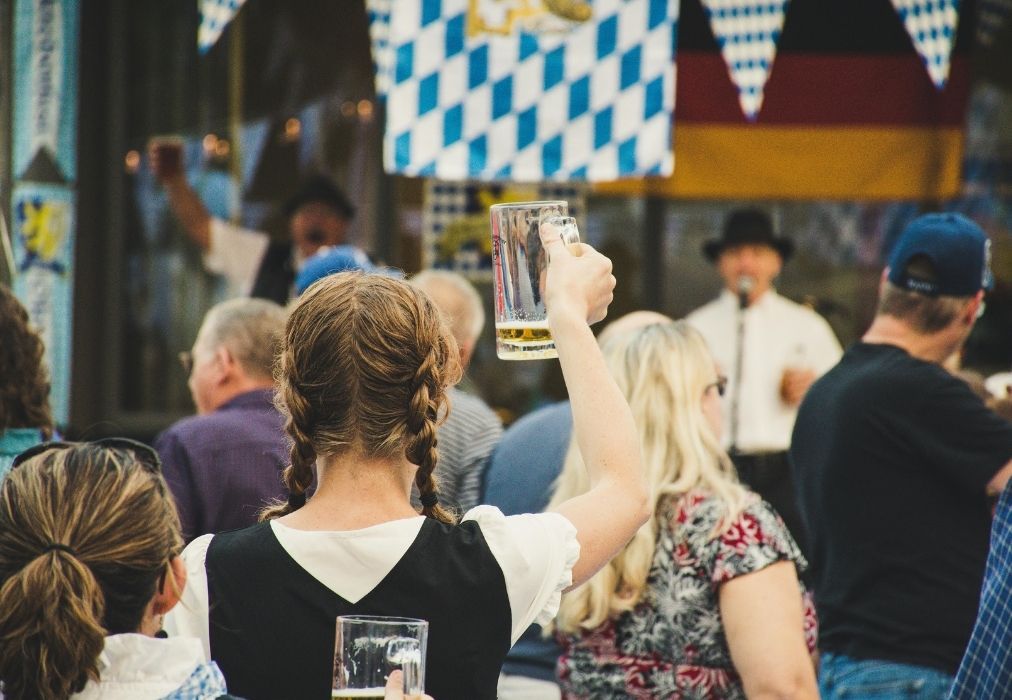
Along with spring, autumn (Herbst) is a great time to visit if you want to beat the summer crowds and enjoy the changing of the leaves, except if you plan to visit for Oktoberfest in Munich).
With temperatures ranging from 0 C in late November to 20 C in September, you will have to be prepared for all conditions. Rain can still be felt across the country, but you can get excited about at least 9 hours of sunlight a day and the chance to enjoy some of the early snowfall of the year. There’s also the magic of the Christmas markets towards the end of November.
As the leaves change color and the weather starts to cool down, this is the perfect time to explore the charming and quaint German villages, castles and countryside, and enjoy the last of the hiking and cycling season.
Here are a few things you can’t miss when you visit in autumn:
- Oktoberfest (last 2 weeks of September and first week of October): The world’s largest and most iconic beer festival, Oktoberfest, starts on the third week of September with visitors flocking to Munich in the millions to immerse themselves in the Bavarian attire, cuisine and ambiance and… the beer, of course.
- Bad Dürkheimer Wurstmarkt (first two weeks of September): Though “wurstmarkt” means “sausage market”, the spa town of Bad Dürkheim in Rhineland-Palatinate turns into a giant festival of music, dancing, parades, food stalls, and over 300 wine stalls featuring all local wineries and vineyards for the first two weeks of September.
- Erntedankfest (Harvest Festivals or “Thanksgiving”): Like the American and Canadian Thanksgiving holiday, Erntedankfest celebrates the harvests of the year, with huge feasts, parades, and church services. Even if the religious component isn’t your thing, it’s just fun to be part of the traditional festivities, and you can enjoy one of Germany’s biggest in Düsseldorf.
Pro tip: Oktoberfest is single handedly one of the most attended events on the planet every single year. With this, accommodations book up, flight prices go up, and transportation in and out of Munich becomes a challenge. Book everything you will need way in advance, bookings are typically made from one year to the next.
Winter (December to February)
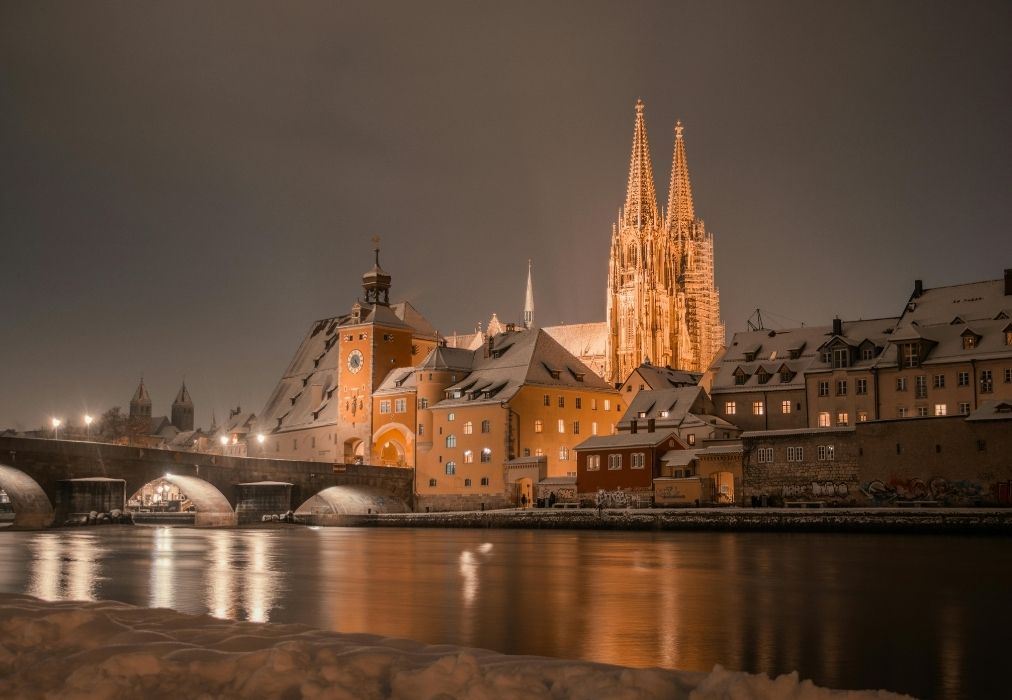
In the grand scheme of things, Germany experiences milder winters than its neighboring countries.
Average low temperatures are around -4 C in the south and it will normally be above 0 C in February. Big cities like Berlin and Hamburg experience around 30mm of snow per month from December to February, while Cologne sees less than 20mm in December and January and only 7mm in February.
Munich is one of the coldest cities in the country and sees a whopping 70mm of snow per month during winter.
This means that if you are traveling to Germany during the winter and you are not used to the cold, you have to be prepared for low temperatures.
Germans love to get outside no matter the time of year or the temperature, and early winter boasts quite the spectacle of Christmas lights, ice skating and markets, so it’s very important to pack for the occasion.
Here are a few key festivals and celebrations in Germany in the winter:
- Weihnachtsmärkte (Christmas Markets): Since the traditional Christmas market with wooden stalls, hot chocolate, mulled wine, and the cutest crafts and decorations started in Germany, you can’t visit in the winter months without exploring at least one. Nuremberg’s Christmas Market is one of the biggest in the country, but virtually every city, big or small, will have some variation of a Christmas market for you to explore. There are so many Christmas Markets in Germany across Central Europe, in fact, that we’ve created a whole tour dedicated to exploring as many markets as we can!
- New Year’s Eve in Berlin: On par with New York City’s ball drop, or Sydney Harbor’s firework display, Berlin’s celebrations at the Brandenburg Gate attract hundreds of thousands of visitors, and it’s something you have to see if you’re in Germany over New Year’s.
Public Holidays
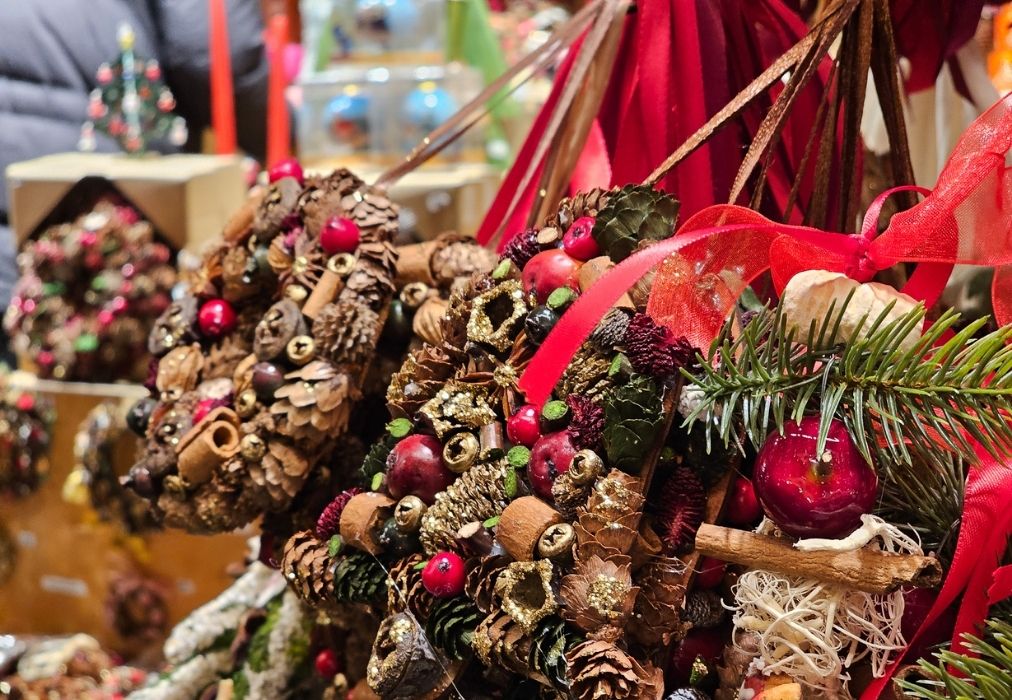
There are so many public holidays in Germany. In addition to the national dates, you also need to add state holidays and other local celebrations.
IMPORTANT: Germany is very strict on their holidays and the majority of shops, even essential services, will close every Sunday and on all public holidays. If you plan on traveling over the public holiday or on Sundays, plan for everything you will need in advance, and spend the day like a local would, relaxing, spending time with family and friends, and going to church (optional, of course).
Here’s a list of public holidays observed nationally and by state to keep an eye out for while planning your trip to Germany:
National Public Holidays
Germany has a few holidays that are observed country-wide:
- January 1: New Year’s Day
- March 29: Good Friday
- April 1: Easter Monday
- May 1: Labour Day
- May 9: Ascension Day
- May 20: Whit Monday
- October 3: Day of German Unity
- December 25: Christmas Day
- December 26: 2nd Day of Christmas
Regional Public Holidays
Besides the country-wide celebrations, there are also regional holidays to consider:
- January 6: Epiphany (Baden-Württemberg, Bavaria, Saxony-Anhalt)
- March 8: International Women’s Day (Berlin, Mecklenburg-Western Pomerania)
- March 31: Easter Sunday (Brandenburg)
- May 19: Whit Sunday (Brandenburg)
- May 30: Corpus Christi (Baden-Württemberg, Bavaria, Hesse, North Rhine-Westphalia, Rhineland-Palatinate, Saarland, Saxony, Thuringia)
- August 15: Assumption Day (Bavaria, Saarland)
- September 20: Children’s Day (Thuringia)
- October 31: Reformation Day (Baden-Württemberg, Bavaria, Berlin, Hesse, North Rhine-Westphalia, Rhineland-Palatinate, Saarland)
- November 1: All Saints’ Day (Baden-Württemberg, Bavaria, North Rhine-Westphalia, Rhineland-Palatinate, Saarland)
- November 20: Repentance Day (Saxony)
Passport and visa requirements
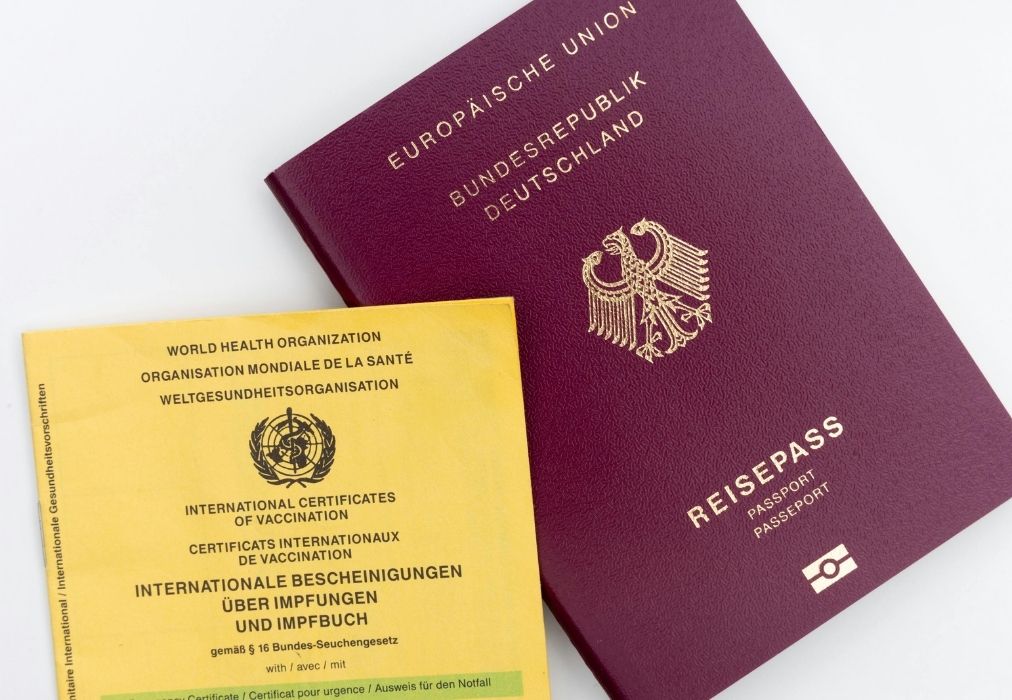
Germany is a founding member of the European Union and is part of the free movement of people and goods called the Schengen Zone.
If you are a citizen of a non-Schengen country without a visa-free travel agreement with the area you need a Schengen visa. You should apply for it at the embassy of the country you plan to first enter the zone through. Your Schengen visa is typically valid for up to 90 days of travel within the zone in a 180 days period.
Schengen Visa: While the general process is similar for all countries within the Schengen zone, the requirements do change and can take weeks to process so allow enough time for this. If you are unsure about the visa application process for Germany, check out this resource for more information, or you can use a service such as iVisa to do it for you.
Passport Validity: We strongly recommend that you make sure your passport is valid for at least 6 months after departure and has 2 empty pages.
Health and safety
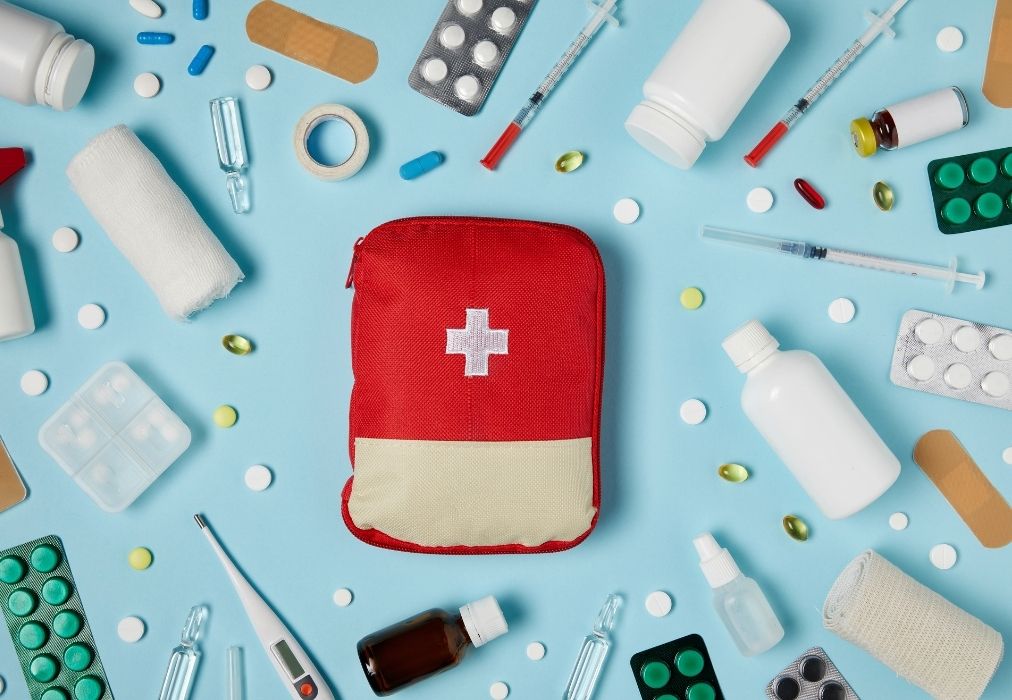
Nobody wants to get sick when on vacation but, if the worst is to happen, it pays to be prepared.
Bring all the medication you’ll need: During your trip to Germany, you will usually not be too far from an urban center, a doctor, a hospital and a pharmacy, but it is strongly recommended to bring any prescription medication you may need and enough of it to last you the entire trip.
Your specific medication may not exist in Germany, or it may require a prescription you need to see a doctor for, save time and hassle by bringing everything you may need with you. Review what you should bring in your first aid kit here.
IMPORTANT: Make sure any prescription medication comes in its original pharmacy packaging, and with the corresponding doctor note and prescription to avoid issues at the border. It is your responsibility to check that whatever medication you bring can indeed be taken into Germany. What may be legal in your country, or even sold over the counter, could be a controlled substance elsewhere. More details here and also here.
Get that coverage: We never leave the house without purchasing extensive medical and travel insurance coverage and this is why we make it mandatory to join our tours. You should make sure that you have adequate medical insurance to cover any unforeseen medical expenses.
Unexpected accidents do happen, and if you needed to be evacuated back home with an injury, the medical bill could bankrupt you.
If you are from the European Union or the UK, bring your medical card as it will cover you in Germany and give you access to free or reduced healthcare costs. However, it may not cover repatriation, ongoing medical treatment, or non-urgent treatment so you need insurance for that.
The best travel insurance will differ for each traveler, depending on the nature, style, and length of your trip, so we recommend using an aggregator and comparison tool such as Travel Insurance Masters to find the right one for you depending on what coverage you want, age, location, trip, etc.
In case of emergency: Germany has two main emergency numbers, 112 and 110. Dialing 112 will connect you to the fire department and ambulance services, but to reach the police specifically, call 110.
Tap water: Tap water is very safe for drinking everywhere in Germany, in fact it’s some of the best in Europe. The most you’ll experience is potential differences in taste, but you’ll never have to worry about safety when you drink tap water. Bring a water bottle with you as you explore the cities of Germany so you can top up at the many public fountains.
Safety in Germany for solo female travelers
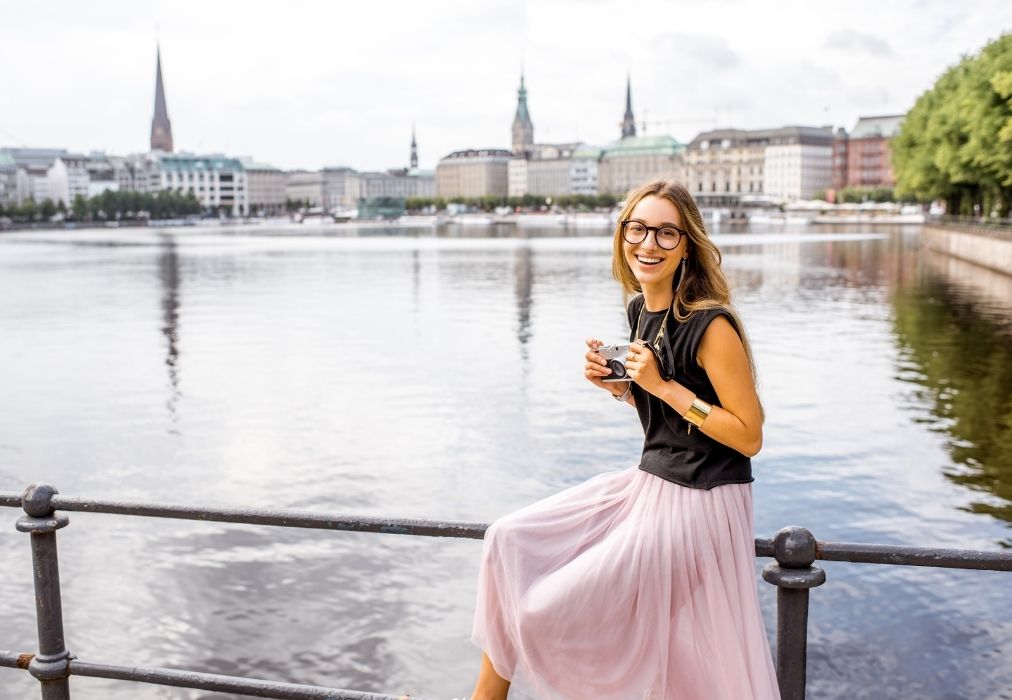
When we conducted our first Solo Female Travel Survey, one of the most relevant take-aways was that women who travel solo unanimously worry about their personal safety. The best countries for first time solo female travelers all have safety in common. That’s why we created the first and most complete resource for women who travel solo to find safety information by country or destination.
With safety data coming from the US and UK Travel Advisories and the Global Peace Index, the index considers factors like the risk of theft, scam and harassment, as well as analyzing attitudes towards women in each country to rank each country from 1-4, 1 being the safest and 4 being the most dangerous for solo female travelers.
Germany is currently rated as a very safe destination for solo female travelers on our safety index. Exercise regular caution and review our safety tips for solo female travelers to ensure you stay safe and have an empowering travel experience. Of course, incidents of petty crime, such as pickpocketing or theft, happen as they could anywhere.
Always keep your valuables safe and your bag in the front and zipped. Slash and theft proof cross-body bags like the ones we listed on this article are a great idea, and in crowded areas, keep your arm on your bag’s zipper for extra protection.
You can read our full article on safety tips here.
If you want to know how to stay safe and prevent a negative experience or encounter on your travels, you can check out EMPOWERFUL, a series of 35+ sessions, 40+ experts and over 50+ hours of learning via masterclasses, panel discussions, and inspiring interviews to empower YOU to travel solo!
Getting to and around Germany
Germany is very well connected internally and with the rest of Europe, so there are endless ways for you to get to and around Germany depending on the amount of time you have and your travel style.
Getting to Germany
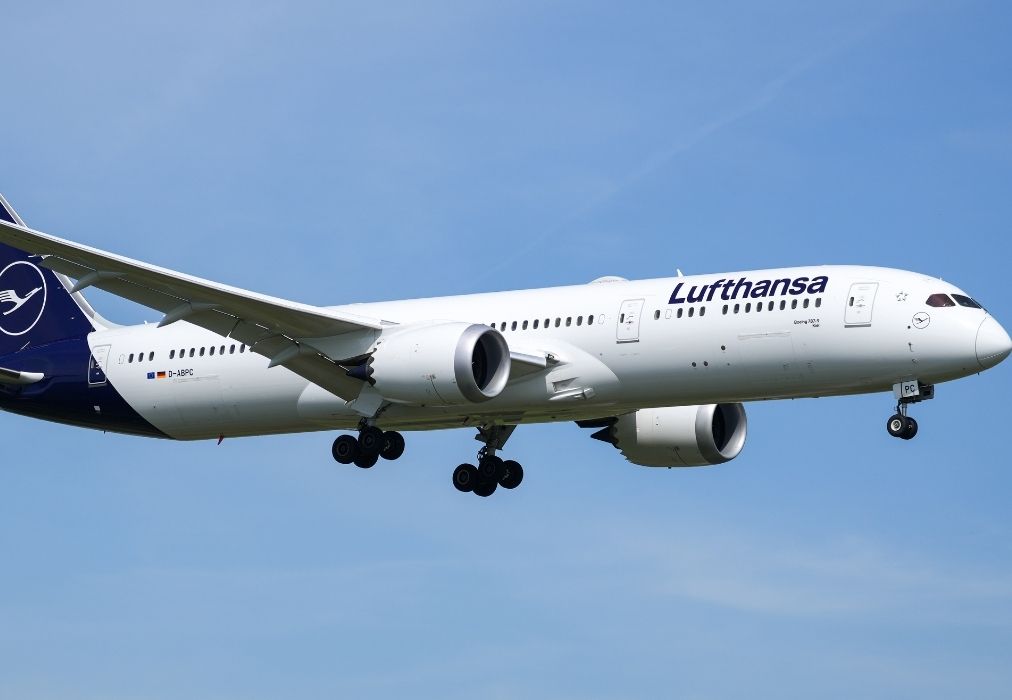
If you’re traveling to Germany from a different continent, flying is going to be the easiest (or potentially only) option.
Germany’s main carrier Lufthansa, and virtually every other large airline will fly to Berlin, Munich, Frankfurt, Cologne, Düsseldorf, or Hamburg from a multitude of international airports around the world.
Alternatively, Europe is extremely well connected by high-speed train, and no matter where you are, you can get to Germany using the InterCity Express (ICE) or a Eurail/Interrail pass.
IMPORTANT: The Eurail pass can be an easy and cost effective way to get around Europe and Germany but in the peak seasons, it can be hard to make last minute seat reservations, which is an additional requirement on most high-speed trains. Booking in advance is super important to take advantage of everything the Eurail pass has to offer.
A budget friendly option is to take a bus like Flixbus which connects Germany to other neighboring countries, and thanks to free movement within the Schengen Area, it’s one of the easiest options too.
If you’re coming from the UK or from the north in Scandinavia, taking a ferry to northern Germany is also an option. One ferry company you can use to get to Germany is Scandlines, which has routes between Denmark and Germany.
Last but not least, renting a car and driving onto Germany’s world-famous, speed-limit free Autobahn from a neighboring country is an easy and fast way to get to Germany.
Getting around Germany
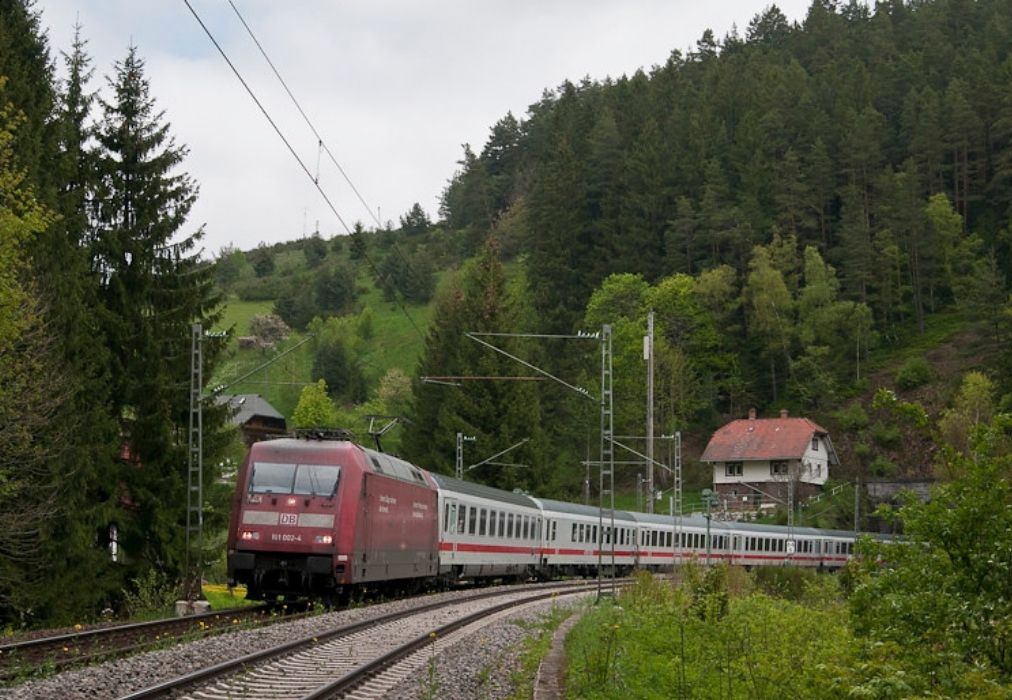
Getting around Germany is very easy and there’s a ton of options for you to get from point A to point B based on your timeframe and lifestyle.
Domestic flight options with national carrier Lufthansa are plentiful, and while flying might make sense to get from Munich to Hamburg, for example, it’s usually quicker, cheaper and more convenient to go from city to city by train, not to mention, better for the environment too.
The Deutsche Bahn connects the entire country with long distance, high-speed trains (ICE, IC/EC) as well as regional services like the RE, RB, and the U- and S-bahn.
Germany also unveiled their Deutschlandticket in 2023 which allows for unlimited travel within all of Germany by any regional or local transportation for only 49 euros per month (aka not long distance or high speed trains).
If you’re planning on doing a grand tour of Germany, this ticket can help you save on all the local transportation you might, and should, use, and will help you stay on budget.
The Deutschlandticket can also be used on regional buses, or you can also take a Flixbus which covers domestic routes on the well maintained Autobahn.
Lastly, a unique and memorable way to get around Germany is by taking a river cruise. The Rhine and the Danube go along some of Germany’s iconic cities like Bonn, Cologne, Düsseldorf and Regensberg. Viking River Cruises or Emerald Cruises have a variety of trip durations, styles and itineraries.
How many days to spend in Germany
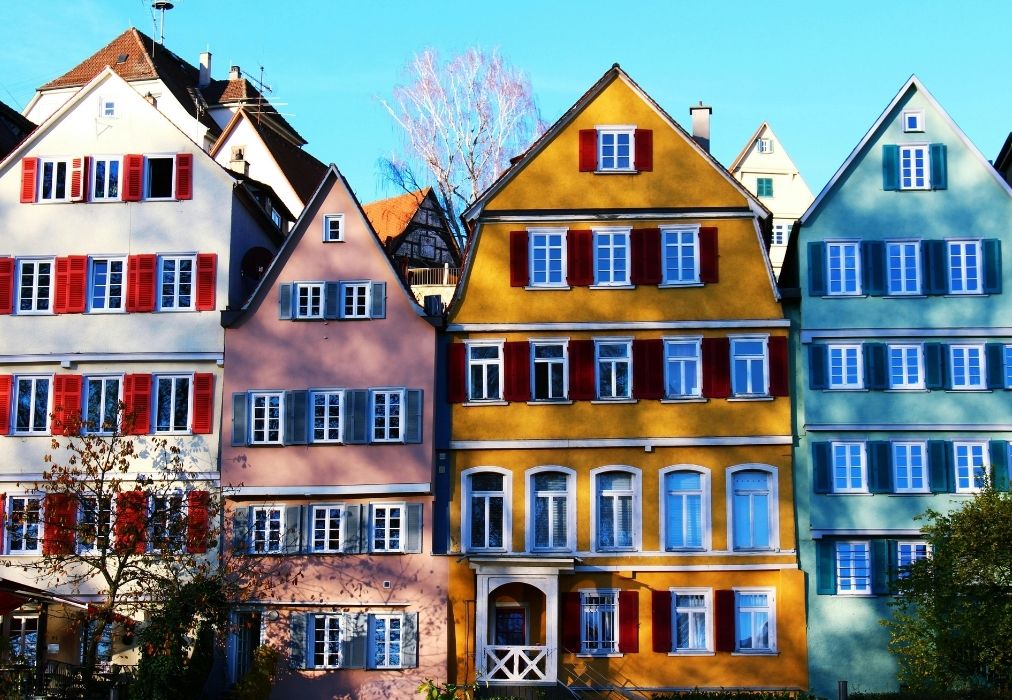
How long you should spend in Germany depends on what type of activities you want to do, and your style of travel.
For a city break to see one of the major cities like Berlin, Munich or Hamburg and explore the nearby region, you’d need at the very least 3 or 4 full days. This will give you enough time to get a quick taste of the history, culture and cuisines in each city and visit some of the museums, with maybe a one day trip to a nearby interesting place.
A week would give you the opportunity to visit two or maybe three cities and immerse yourself in some of the outdoor activities Germany has to offer. You would also have time to visit the memorial sites and concentration camps of WWII, some of which are near main cities.
With two weeks to spend exploring Germany, you’ll be able to experience a good mix of the major cities, smaller towns like Nuremberg or Regensburg, cultural and traditional events like Oktoberfest, Holocaust memorials or concentration camps, the country’s natural wonders and even squeeze in some wine tasting in one or two of Germany’s 13 wine regions.
Top places to see and things to do in Germany
Speaking of all the things you could do with a few weeks in Germany, here’s a few places you have to go to on your trip to Germany:
Berlin
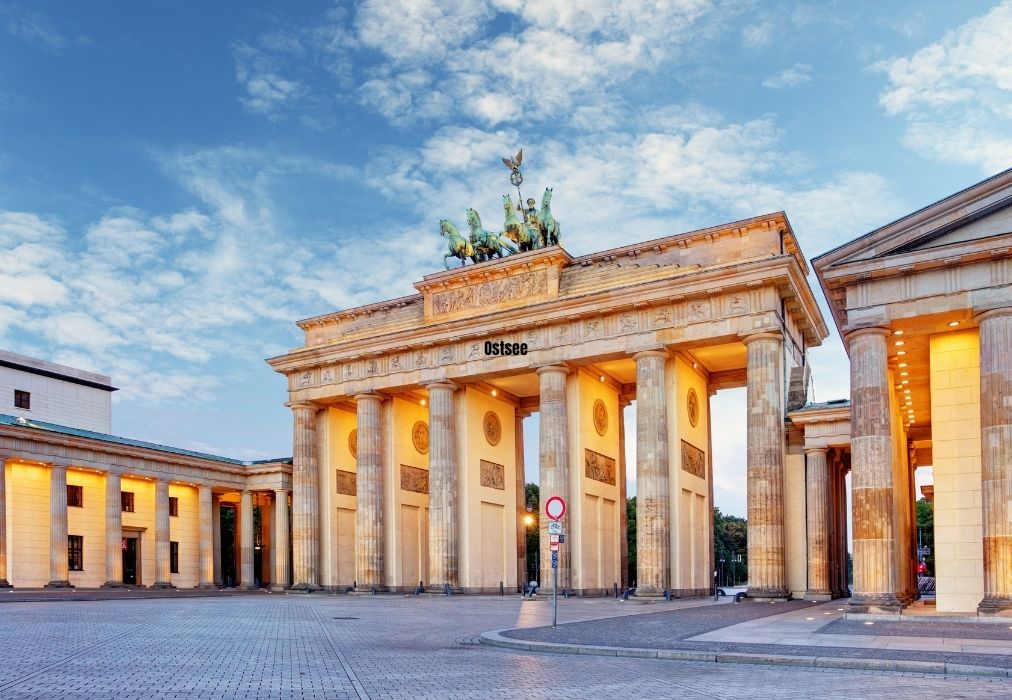
This list could not be made without mentioning Berlin, of course.
You have to explore iconic landmarks like the Berlin Tower, Brandenburg Gate and Checkpoint Charlie, and walk through Museum Island and along the East Side Gallery towards the Oberbaum Bridge (Oberbaumbrücke) in artsy Kreuzberg.
To understand the complex history this city holds, you should visit the Jewish Museum and the Memorial to the Murdered Jews of Europe while in Berlin.
If you have the time, a day trip to the Sachsenhausen concentration camp, one of the first concentration camps to have been built, and explains the tragedies of the Holocaust with great care and sensitivity.
Munich and the Bavarian Alps
Munich (München) is the heart of German and Bavarian culture, and the sense of charm and tradition exudes from Germany’s third largest city.
Experience some of the best people watching in Odeonsplatz and Marienplatz and visit the Old Town Hall, eat local and authentic food with a nice cold Augustiner beer in the Viktualienmarkt, relax and unwind in the city’s Englischer Garten, and experience 360 views of this gorgeous city from St. Peter’s Church.
Locals love to gather on the hills surrounding the city’s stadium, Olympiastadion München, when concerts are on to enjoy the music from afar, so check out the schedule of events here to see if there’s one that interests you.
Make sure to scratch out some time in your busy itinerary to visit Dachau (just 20 minutes by train outside of the city) to understand the disastrous impact this concentration camp had on those who suffered here during the Holocaust.
Munich transforms into the winter wonderland of your dreams come Christmas time, with daily Christmas carols, stunning Christmas lights, and markets pop up in Marienplatz and Thesenwiese.
Go ice skating at the majestic Nymphenburg Palace or in Karlsplatz, and if you have time, visit the surrounding Bavarian Alps to take advantage of the winter sports culture in Garmisch-Partenkirchen and Zugspitze.
The Baltic Coast
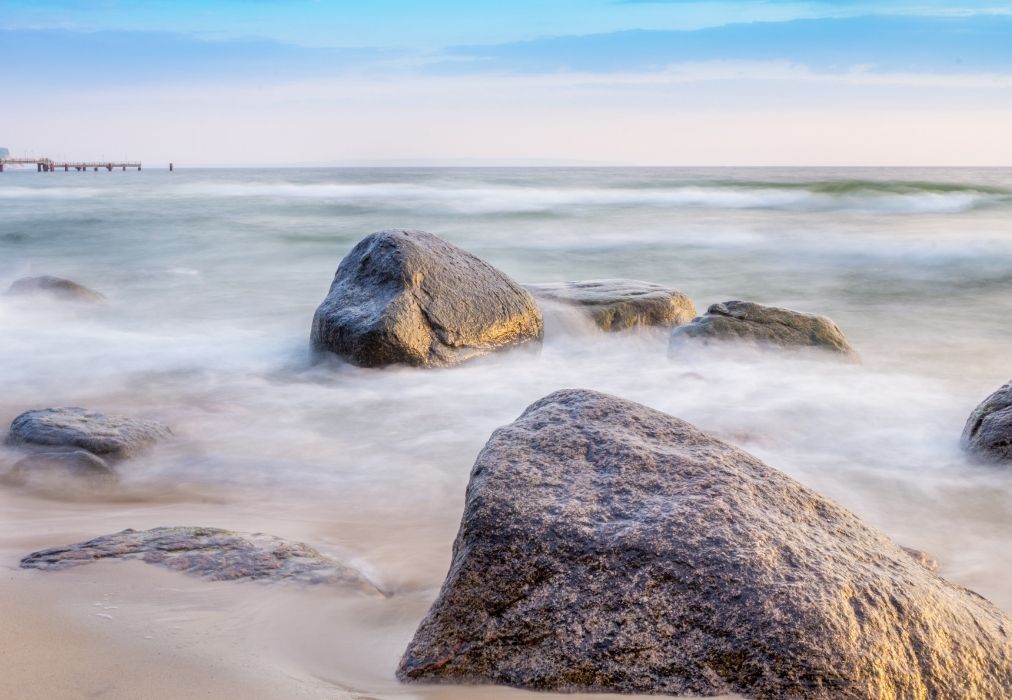
The Baltic Sea coastline (Baltisches Meer, Baltische See, Ostsee) is a more hidden gem of Germany, that’s not hidden at all. Jasmund National Park offers stunning turquoise waters with sandy beaches, towered over by beautiful white cliffs that would have you questioning if you’re still in Germany.
With the cutest spa towns rooted in history, like Lübeck which is actually a UNESCO World Heritage Site, and even beach resorts like Heiligendamm (Europe’s oldest seaside resort) nestled all along this coastline, make sure to take advantage of all the natural beauty of this region.
Dresden
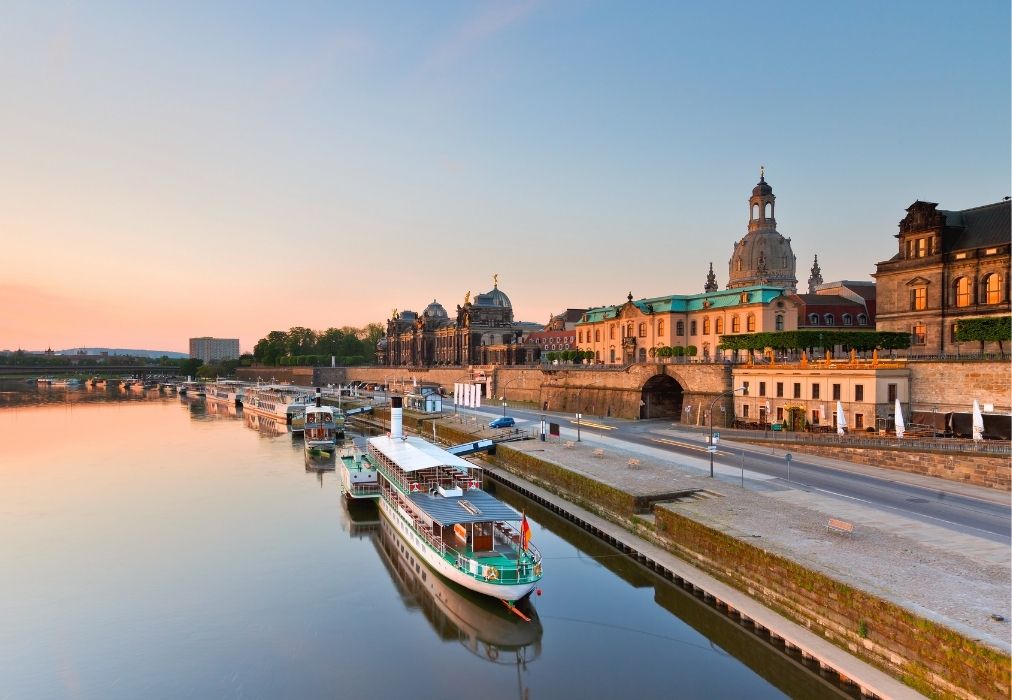
Dresden is known for its rich arts and culture scene, being called the “Elbflorenz” (Florence on the Elbe), but it’s also known for the city’s bombing by British and American forces during World War II killing over 25,000 civilians.
The city was practically decimated, but visitors can now explore its gorgeous Baroque-style rebuilds, like the Zwinger Palace, Frauenkirche, Brühl’s Terrace and the Dresden Castle (Residenzschloss), built up again right after the war, and again after German reunification in the ‘90s.
The city reused and salvaged as much of the fallen buildings as they could while rebuilding, and sandstone buildings in Dresden’s historic city center can be seen with black markings from the bombings (often described as a war crime) to this day.
Neuschwanstein Castle
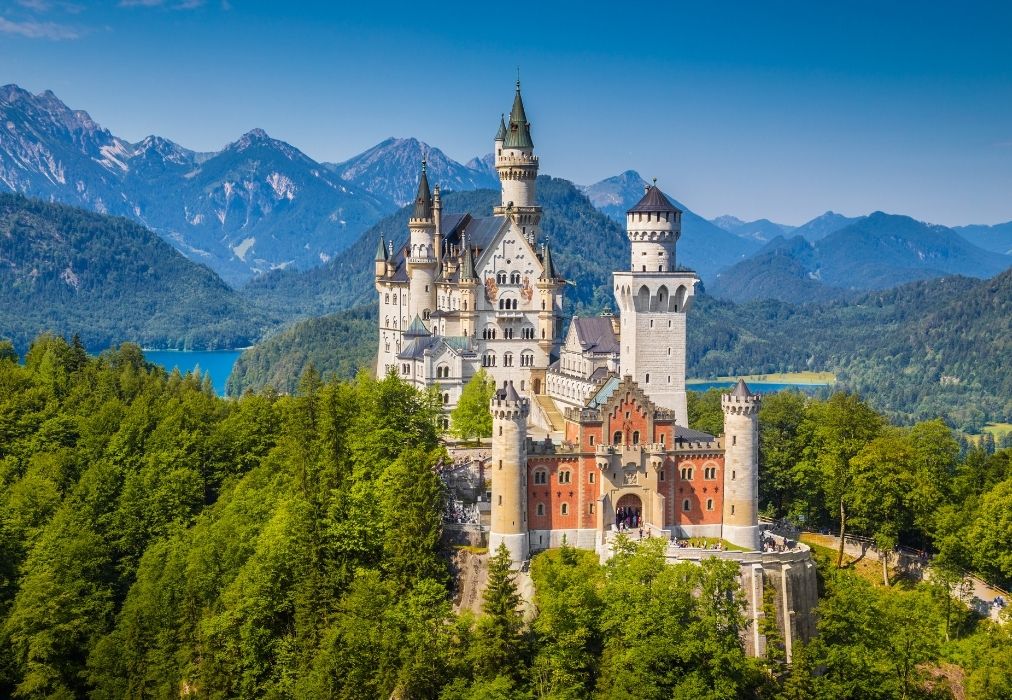
As the inspiration behind Disney’s iconic Sleeping Beauty castle, this huge and dreamy castle in the Bavarian Alps was built for King Ludwig II in 1869, who only slept an astounding 11 nights in the castle.
Beware that Neuschwanstein is relatively hard to get to if you aren’t on a private tour, as taking a train from Munich (the closest big city) to the castle still takes 3 hours, and even longer if you’re trying to take advantage of the Deutschland-ticket.
Take the stress of planning logistics and join a day tour from Munich.
Cologne
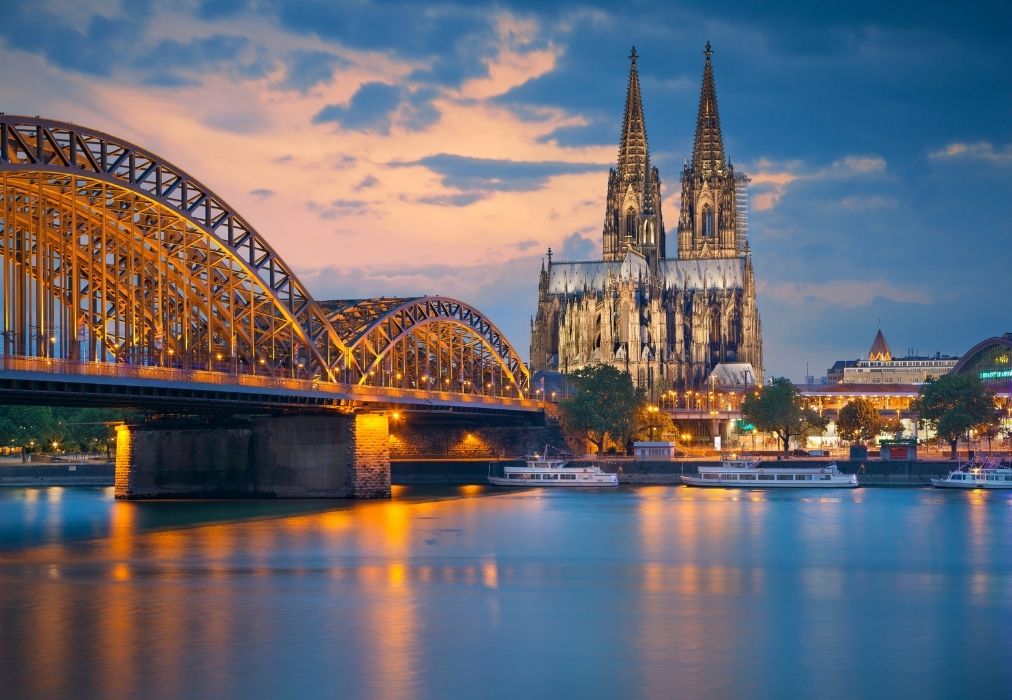
Cologne is another beautiful city along the Rhine River with some amazing architecture such as the UNESCO World Heritage listed Cologne Cathedral and Schloss Augustusburg, and even more amazing gastronomical experiences like the Chocolate Museum (Schokoladenmuseum) or countless beer tasting opportunities of the local beer style, Kölsch, at Früh am Dom or Gaffel am Dom.
From fun and quirky events like one of Europe’s biggest Carnival (Kölner Karneval) festivals in February, to somber and educational landmarks like the EL-DE Haus, former Nazi-era Gestapo headquarters, there are a wide range of activities and experiences to be had in Cologne year round.
Hamburg
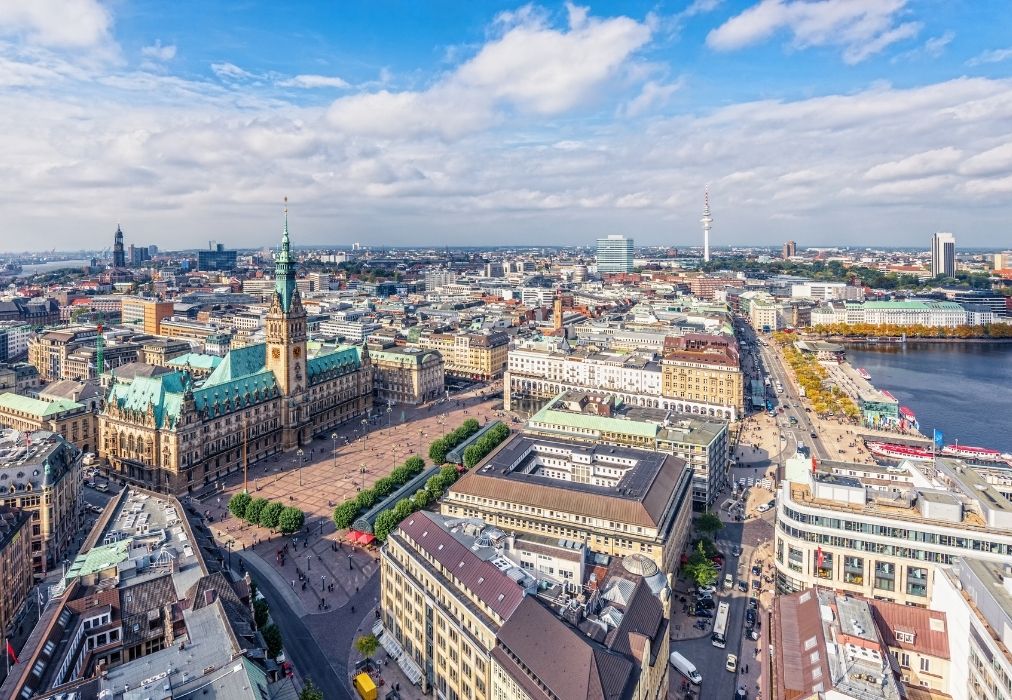
Germany’s second largest city boasts over 2,500 bridges and everything from historic districts like the Speicherstadt and the Port of Hamburg, to more modern experiences like the Reeperbahn, Hamburg’s famous entertainment and club district, or the Elbphilharmonie concert hall right on the water.
Go on a harbor cruise, walk around the Hamburg Fish Market (Fischmarkt) and visit the International Maritime Museum to understand the history of this port city, or visit one of Germany’s largest art museums, the Hamburg Kunsthalle, and stroll around the botanical gardens of Planten un Blomen with one of Europe’s largest Japanese gardens!
The Black Forest

The Black Forest (Schwarzwald) is world-renowned for its dense and gloomy forests that are straight out of a fairytale. Literally.
The Black Forest sets the scene for famous fairy tales like “Hansel and Gretel”, “Snow White”, “Little Red Riding Hood”, “Sleeping Beauty”, “Rapunzel”, “Rumpelstiltskin” and the famous legend of the “Headless Horseman”.
While it has a reputation for mysterious occurrences and supernatural encounters, charming towns like Triberg and Baden-Baden add to the appeal of this magical region.
You have to explore Triberg to see Germany’s highest waterfalls and the world’s largest cuckoo clock, and visit the town’s famous Black Forest Museum.
Also, don’t miss out on driving the Black Forest High Road (Schwarzwaldhochstraße) or visiting Freiburg and its gothic buildings and sprawling vineyards.
Regensburg
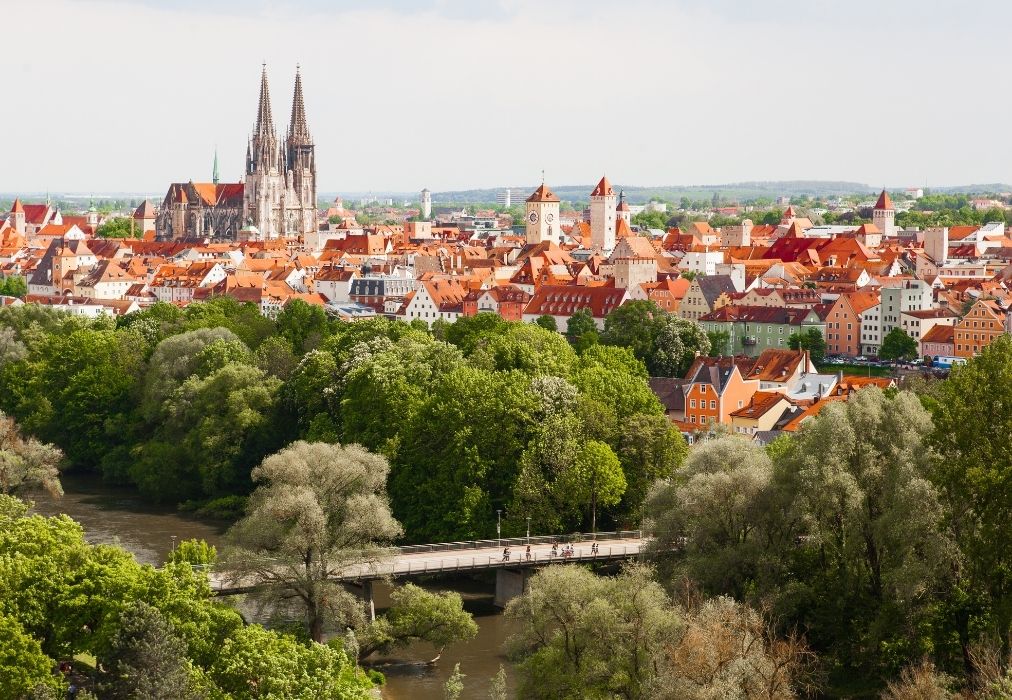
The historical charm of Regensburg has landed the city as a UNESCO World Heritage City and rightfully so.
Old Town (Altstadt) features the 800-year-old Stone Bridge, and the almost 900-year-old Historic Sausage Kitchen, making it one of the oldest restaurants in the world!
The Danube River goes through Regensburg, and strolling along the riverbank or taking a river cruise is a great way to see and get around this city after you’ve learned everything about Regensburg and Bavaria’s history at the Regensburg Museum of History.
Travel essentials for Germany
In this section we will look at a range of other things to consider when traveling to Germany as a solo female traveler.
Money and currency
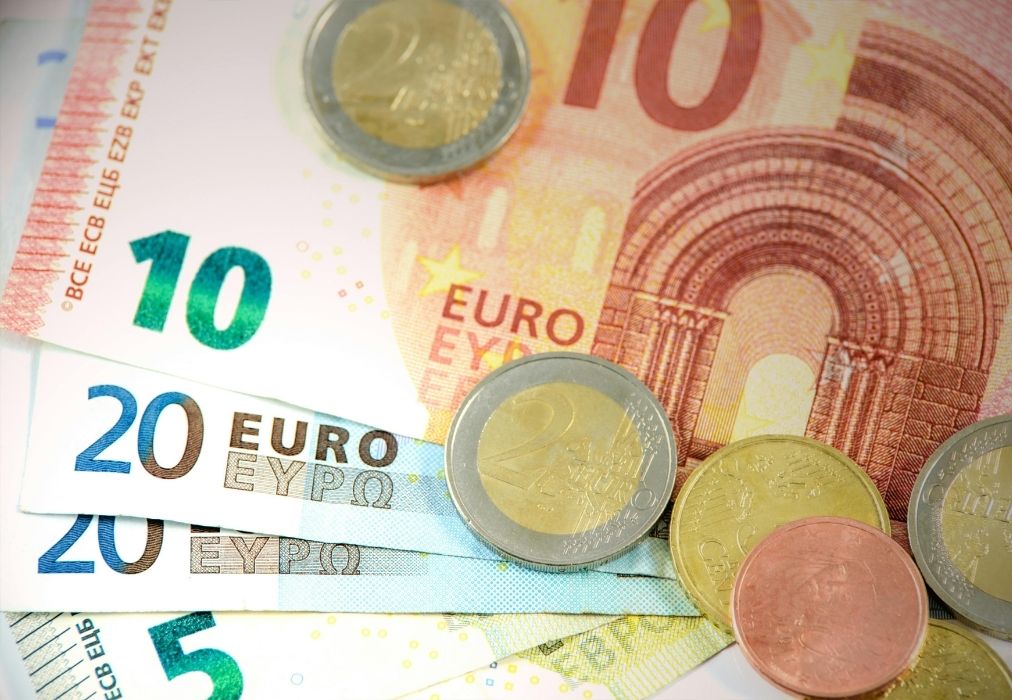
Germany uses the euro (€), which makes travel through Europe and Germany a lot more convenient thanks to the European Union. You can find bills of €5, €10, €20, €50 and €100 bank notes.
Currency exchange services are available at airports, banks, exchange bureaus, and some hotels. However, be aware that these services often charge fees or offer less favorable exchange rates, so it’s smarter to compare rates and fees before exchanging money.
ATMs: ATMs are widely available throughout Germany, especially in urban areas and tourist destinations and are actually extremely important as despite the COVID-19 pandemic encouraging contactless payments around the world, Germany still favors cash.
Most ATMs will accept major international credit and debit cards, but make sure to inform your bank of your travel plans beforehand to avoid any issues with your card and be left stranded without cash.
Keep in mind that some ATMs may charge a fee for withdrawals, and it’s a good idea to withdraw larger amounts less frequently to minimize fees.
Pro tip: Avoid ATM machines that are standalone and not attached to a bank like Euronet. These charge exorbitant fees and give an extremely poor exchange rate, as they are an exclusive ATM business. Additionally, if your card gets taken, it is much harder to retrieve it than from a bank.
Credit cards: Like we said, major credit cards such as Visa and Mastercard are widely accepted in larger cities and tourist areas. Contactless payment methods, such as Apple Pay and Google Pay, are becoming increasingly popular.
However, cash is still preferred outside the main tourist areas or in smaller towns, and may be favored in Christmas markets.
Tipping culture: Tipping in Germany is generally not expected, but it’s customary to round up your bill or add a small tip around 5-10% if you get table service at restaurants, bars or cafés. At events like Oktoberfest, where your server is dealing with large sections and lots (I mean LOTS) of beer, tipping will be expected. For example, a maß of beer at Oktoberfest or similar events will be around €15, so leaving €2-3 will be appreciated.
Local culture and customs
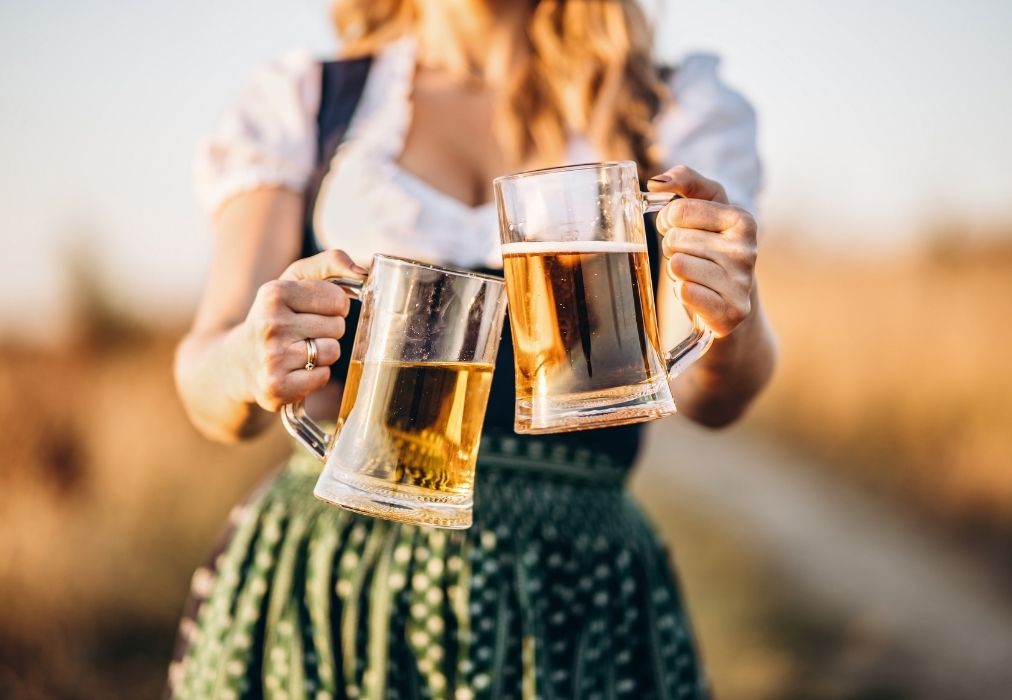
There are a lot of stereotypes when it comes to the way things go in Germany and in this section we wanted to dispel some myths.
Punctuality: If you’re not early in Germany, you’re late. Being on time is a big sign of respect in German culture, so from appointments or meetings to even hanging out with a friend, you should try to be on time or plan in advance if you are usually a tardy person.
Formality: German culture is generally formal, and a handshake should be your go-to greeting, unless they greet you otherwise.
In the German language, they have formal conjugation and informal conjugation, and formal conjugation and titles are used as a sign of respect until invited to use informal language. Because of this, you should use titles and last names in formal settings until invited to use their first name as well. This is less likely in casual friendly settings, where they will just introduce themselves by their first name.
Rules and Structure: Germans are very cautious about following the rules, and even something as small as jaywalking is very frowned upon. It is a sign of respect to follow the rules by following traffic laws or purchasing your train or bus fare.
Bureaucracy: Germany’s bureaucracy and procedures are extremely meticulous and organized, but often involves a lot of paperwork. It’s important to give yourself enough time to meet all requirements and fill out all forms for any applications, as these processes can be quite time consuming.
Straightforward Communication: The German communication style can be jarring for someone who’s used to a more sensitive or careful style of communication but Germans value an honest and direct conversation, and they do not like to beat around the bush.
If they don’t like something, they will let you know, and they won’t tell you in the American “compliment sandwich” fashion or the British indirectness. They will get straight to it as they value efficiency not only in their day to day life, but in their conversations, too. They are not being rude, this is just how they communicate.
It is rare for a German person to genuinely engage in small talk, and it is also rare for Germans to get into really deep conversations as they value their personal space and privacy. Once they open up to you and let you in, you’ll have a friend for life!
Environmental Priorities: Germany is a global leader in their environmental efforts, and meticulous recycling and waste separation practices will be expected and often enforced anywhere you go in the country.
Public transportation is also very developed, accessible and convenient, and a much more sustainable option. Show respect for German values and culture and challenge yourself to cut down your carbon and environmental footprint!
Basic German words to know
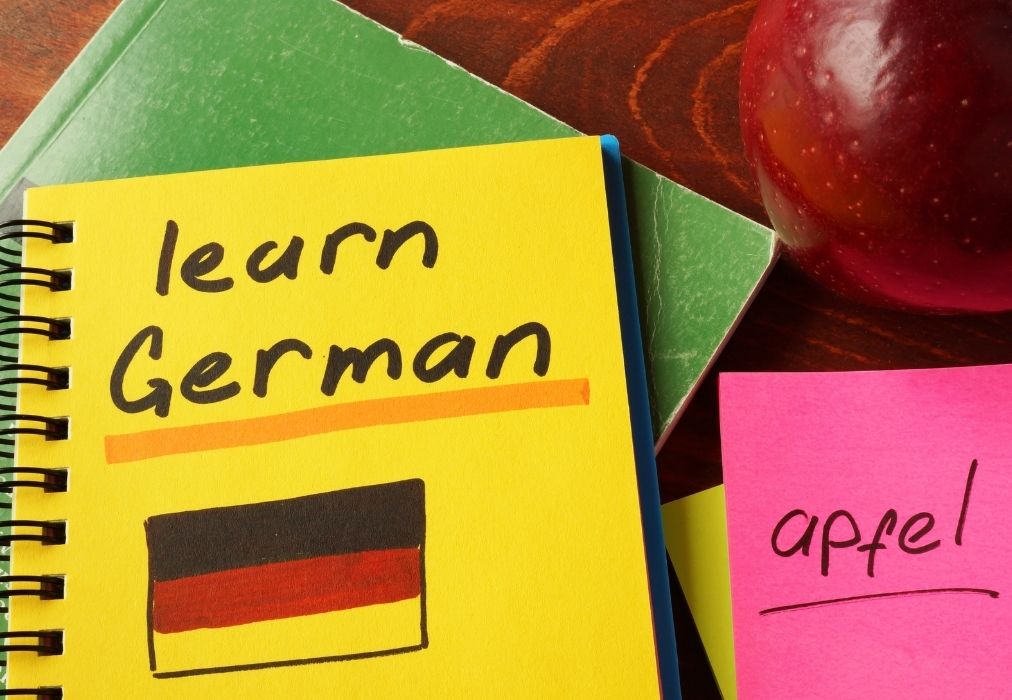
German is a great language to get the hang of while traveling through Central Europe, as it is spoken as an official language in Germany, Austria, Switzerland, Liechtenstein, Luxembourg and Belgium.
Of course there are regional differences and dialects, but for the most part you’ll be able to get by with a basic understanding of the language.
Here’s a good starting point to help you get by in German-speaking countries:
- Hallo – Hello (In Munich or Southern Germany, you’ll hear locals saying “Servus” (“sair-voose”) to say hello, as well)
- Guten Morgen (“goo-ten mohr-ghen”) – Good morning
- Guten Tag (“goo-ten tahk) – Good day/afternoon
- Gute Nacht (“goo-ten nahkt”) – Good night
- Tschüss (“choose”) – Bye (Again, in Munich or Southern Germany, locals will say Servus (“sair-voose”) or even “Tschau” pronounced like “Ciao” to say goodbye)
- Auf Wiedersehen (“auv-veeder-sen”) – A more formal Goodbye
- Ja (“Ya”) – Yes
- Nein (“Nine”) – No
- Danke (“dahn-kuh”) – Thank you! (Danke schön (“dahn-kuh shurn”) – Thank you very much!)
- Bitte (“bi-tuh”) – Please and/or You’re welcome, depending on context. (Bitte Schön (“bi-tuh shurn”) – more polite or warm version, like “my pleasure”)
- Prost! (“prohst”) – Cheers!
- Ich verstehe nicht (“ikh fer-shtay-uh nikht”) – I don’t understand
- Sprechen Sie Englisch? (“shprekh-en zee eng-lish”) – Do you speak English?
- Wie viel kostet das? (“vee feel koss-tet dahs”) – How much does it cost?
- Wo ist die Toilette? (“vo ist dee toy-let-uh”) – Where is the toilet?
- Ich hätte gerne… (“ikh het-tuh gair-nuh…”) – I would like…
NOTE: “W” in the German language is pronounced like an English “V”, so make sure to say “Vo” and not “Wo” to ask “where” something might be, etc.
Important women in Germany’s history
Some of history’s most important and influential women have come out of Germany. Here’s a few you should definitely know of before visiting the country:
- Anne Frank (1929-1945): Arguably one of the most famous women in history, Anne Frank was born in Frankfurt and kept a diary while in hiding with her Family in the Netherlands during World War II. Anne was just a girl when she and her family became victims of the Holocaust, but her diary lives on as one of the most influential books in history.
- Hildegard von Bingen (1098-1179): There was nothing “Saint Hildegard” couldn’t do. Often considered the founder of German natural history, she was a medieval writer, composer, philosopher and holistic healer, who is only one of three women to ever be named “Doctor of the Church”.
- Bertha Benz (1849-1944): Though the invention of the world’s first car is credited to Bertha Benz’s husband, Karl Benz, Betha was the first person to ever drive after funding Karl’s invention with her dowry, and then stealing the “Patent Motorwagen Model III” to drive 120 miles from Mannheim to Pforzheim with their two sons.
- Sophie Scholl (1921-1943): Sophie Scholl changed history as a member of the non-violent Nazi resistance group, White Rose, when she was caught handing out anti-war flyers in Munich. She was executed by the Nazi’s for standing up for what she believed was right, and her martyrdom became a symbol of courage in Germany.
- Angela Merkel (1954–Present): Growing up in former East Germany, Merkel became the first woman to be Chancellor of Germany, after being elected into Parliament after German reunification. Though she is retired now, she has played a major role as a trailblazer in a more male-dominated political landscape.
Local Cuisine
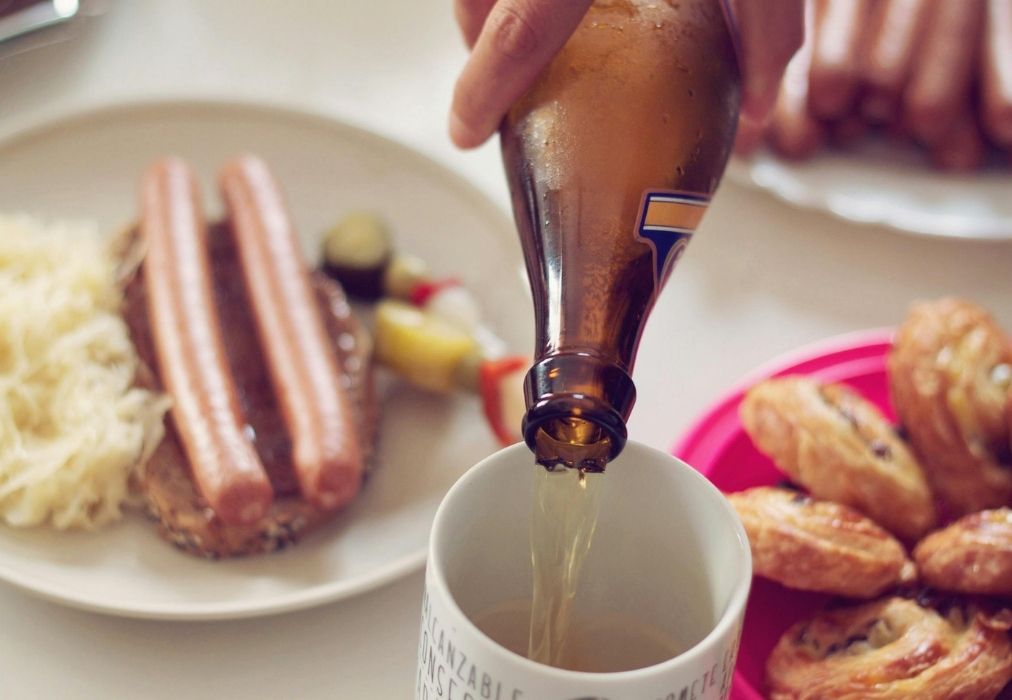
German cuisine is a staple part of enjoying the culture on your trip to Germany.
When eating local food in Germany you should expect lots of protein (especially meat), bread and potatoes, making meals a little heavy, heart-warming and comforting, especially in the winter.
Breakfast on the other hand tends to be quite light with a bread roll, some cold cuts and cheese and spreads like butter or jam being quite standard to get your day started – unless you’re in Bavaria, where a traditional breakfast is a weißwurst sausage, pretzel and a beer…
Best German Foods to try
Here are a few dishes you have to try on your visit to Germany:
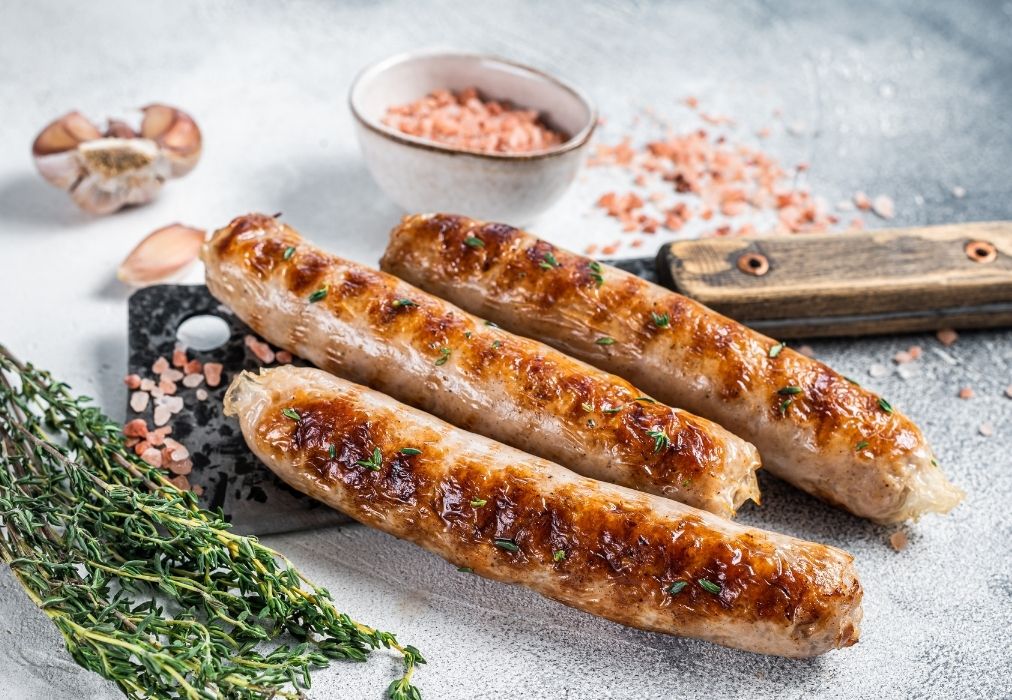
- Bratwurst: Made from pork, beef or veal, this staple sausage is usually served grilled with some sauerkraut and potatoes.
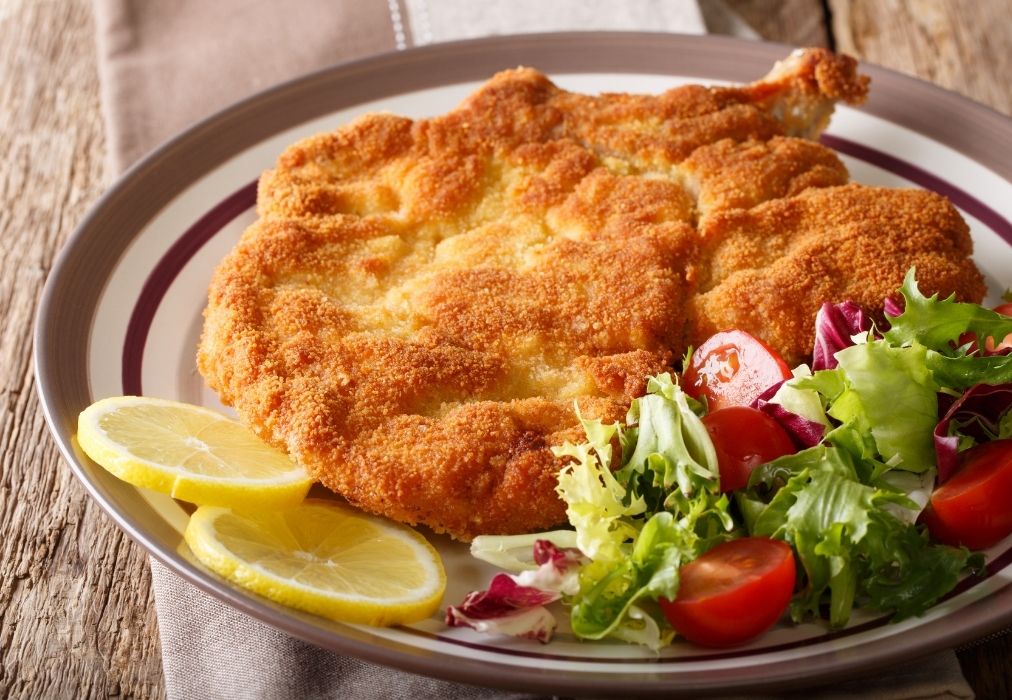
- Schnitzel: An international classic, schnitzel is a thin and breaded fried meat (usually pork, veal or chicken) served crispy and crunchy.
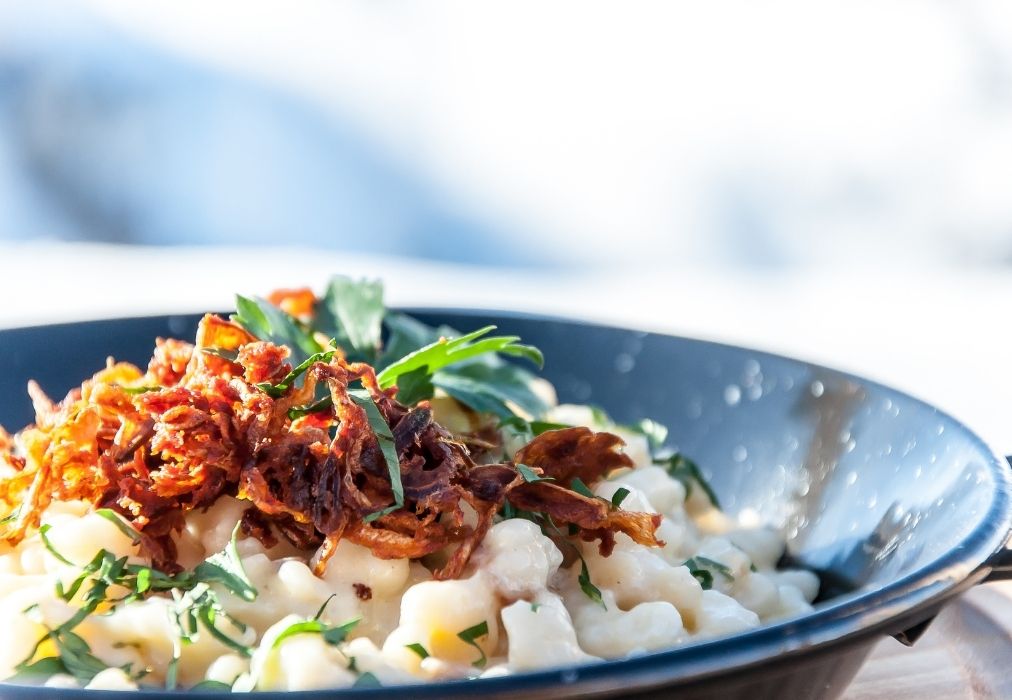
- Käsespätzle: Essentially German mac & cheese, made with homemade egg noodles and layers with lots of cheese that gets oven-baked and melted.
- Brezn (Pretzels): Could we even make this list without mentioning the beloved pretzel? These soft and salted classics can be found virtually everywhere, and they are a quick and affordable option for a midday snack, or to accompany any dish.
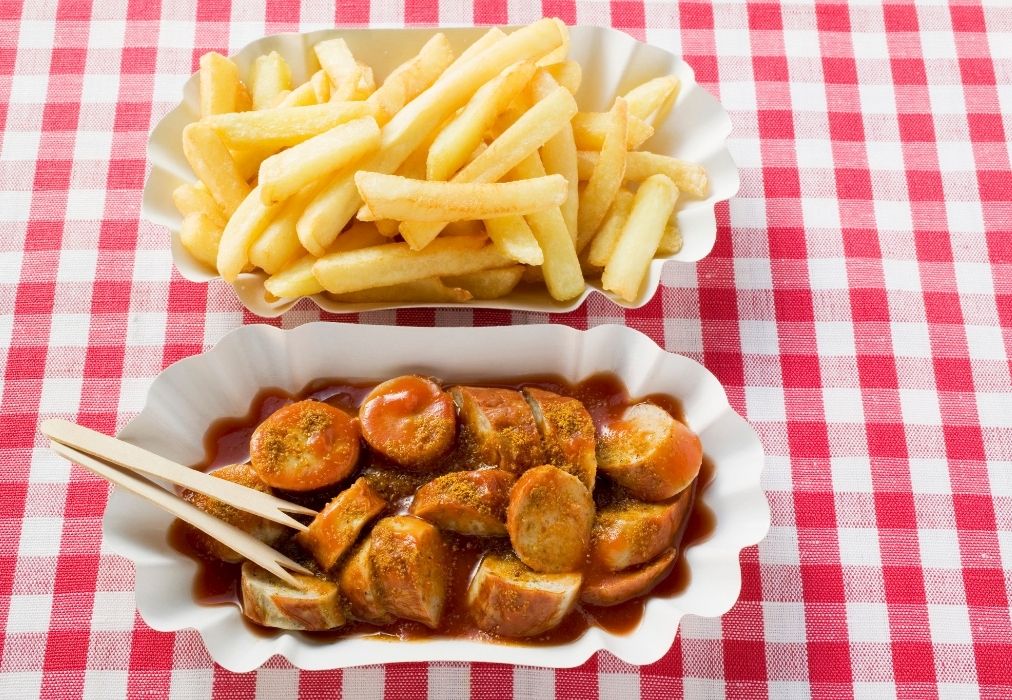
- Currywurst: Mostly eaten as street food, fast food or at sporting events, Currywurst is a bratwurst sausage smothered in a yummy and curry-spiced tomato sauce.
- Kartoffelknödel: Traditional potato dumplings that are the perfect side for any protein, and are the perfect vessel to sop up any sauces, stews or gravy.
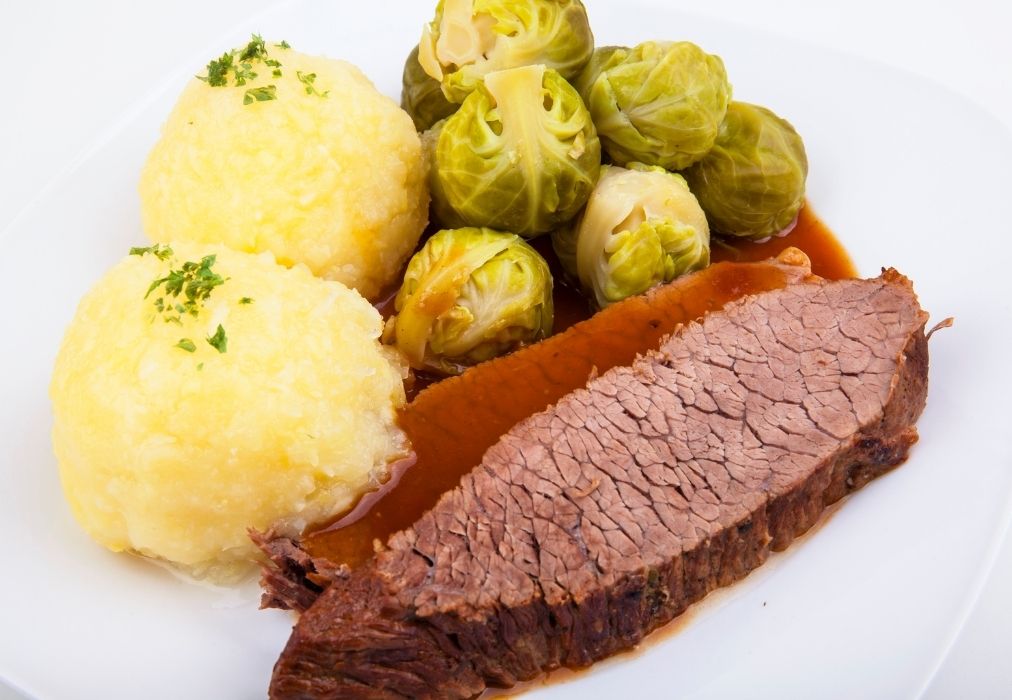
- Sauerbraten: As Germany’s national dish, Sauerbraten is a vinegar-marinated and flavourful roast meat served with lots of bread and gravy.
- Leberkäse: Almost like a German meatloaf, this is a typical Bavarian dish either served in a bun with some mustard or with some boiled potatoes and vegetables.

- Gulasch: As a comfort food classic, Goulash is a hearty and slow cooked stew served with potatoes or bread (sometimes even served in a bread bowl!). It is popular in Germany and other Eastern European countries like Poland or even Russia.
- Kartoffelsalat: Potato salad that varies by region, more vinegar-based and warm in the north and more mayonnaise-based and cold in the south.
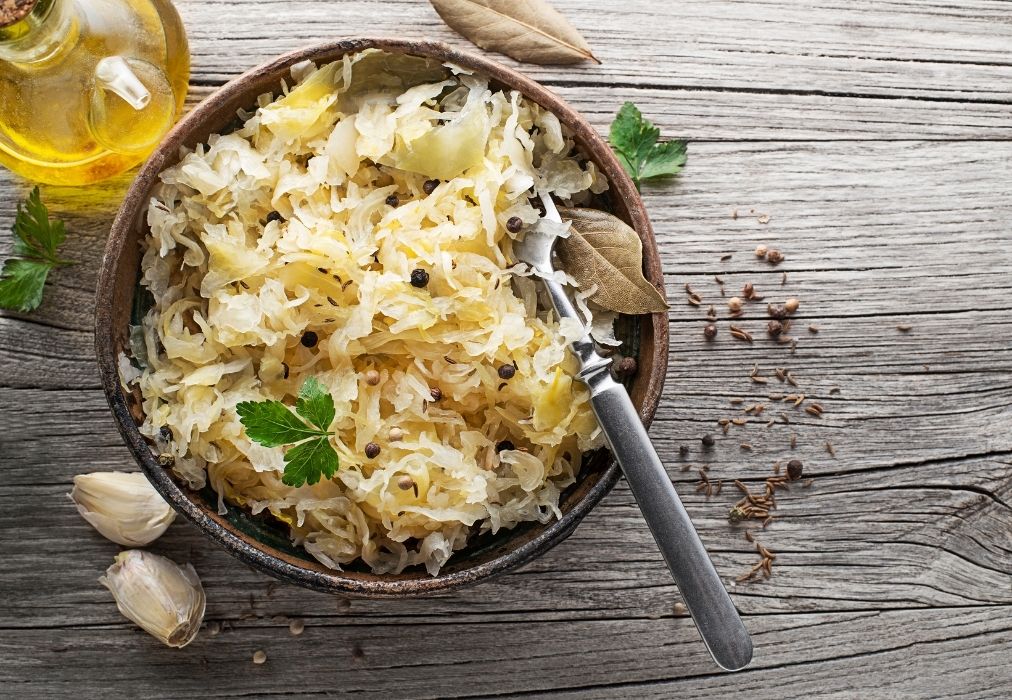
- Sauerkraut: This fermented cabbage dish is a staple in German cuisine and is added to meat, especially sausages, hot dogs, rolls, etc. to add a tangy, crunchy, fresh flavor.
- Eisbein: Tender pork knuckle served both boiled or roasted and comes with the classic sauerkraut and potatoes!

- Maultaschen: Large German dumplings filled with minced meat, spinach, onions, and bread crumbs and served in a broth, pan-fried, or with a butter sauce.
Best German Desserts to try
Germans have a sweet tooth and there is a wide selection of desserts that you should try on your trip to Germany:
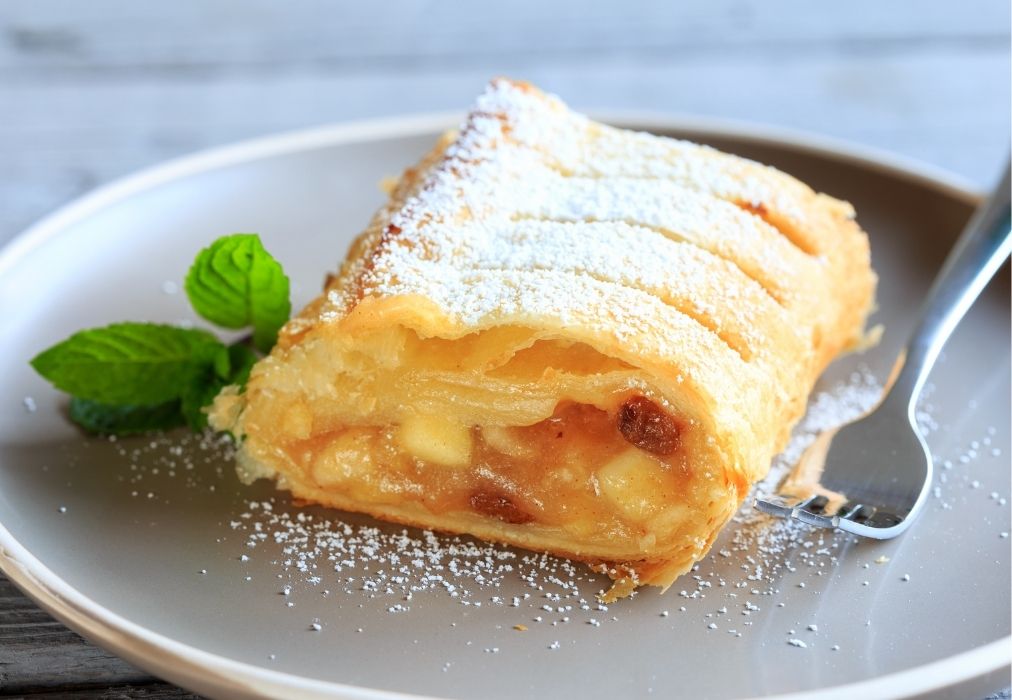
- Apfelstrudel: Arguably the most popular German dessert, the German apple strudel is a flaky pastry filled with apples and spices, baked to flaky perfection and sprinkled with sugar.
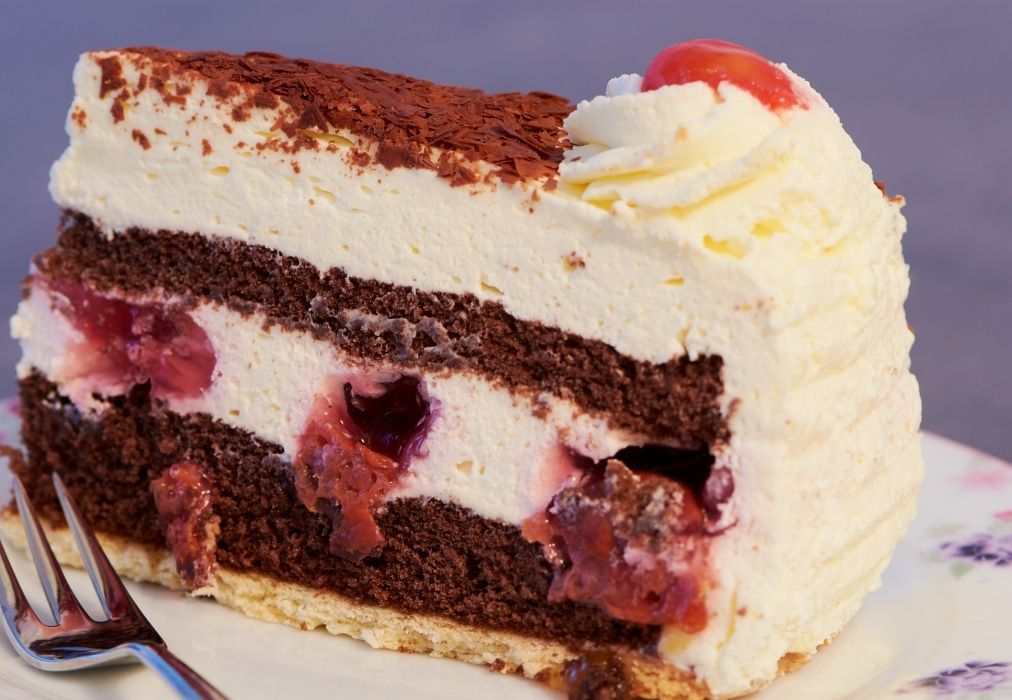
- Schwarzwälder Kirschtorte (Black Forest Cake): As Germany’s national dessert, the black forest cake is a layered chocolate sponge cake with lots of whipped cream, shaved chocolate and Kirsch, a sweet cherry schnapps.
- Lebkuchen (Gingerbread): This spiced and sweet cookie is especially popular during the holiday season. Baked to a soft or crisp texture and sometimes filled with nuts or fruit. Germany is actually the birthplace of the Christmas gingerbread house or Lebkuchenhaus/Pfefferkuchenhaus tradition, so make sure you try one of these delicious treats if you’re visiting at that time of year.

- Stollen: Also enjoyed during the Christmas season, Stollen is a fruit-filled loaf, usually with nuts and dusted like snow with powdered sugar.
- Bayerische Creme (Bavarian Cream): Almost like a custard, Bavarian Cream is a smooth and sweet dessert served chilled.
- Bienenstich (Bee Sting Cake): Though the name of this sweet yeast cake is up to interpretation, its caramelized almond topping and custard filling is absolutely delicious.
- Käsekuchen (German Cheesecake): Usually less sweet than the American-style cheesecake, the German cheesecake is made with quark cheese and is quite dense.
- Erdbeertorte (Strawberry Torte): As a summer staple, this light sponge cake is layered with fresh strawberries and whipped cream, very similar to a strawberry shortcake.
- Krapfen: Very popular in Berlin, the Krapfen is often called a “Berliner” and is a soft and round powdered donut filled with jams, custards or other fillings.
- Zitronenkuchen (Lemon Cake): Though the original lemon loaf was most likely invented in England, this German cake doused in a lemon glaze is a must-try while in the country.
Best German drinks to try
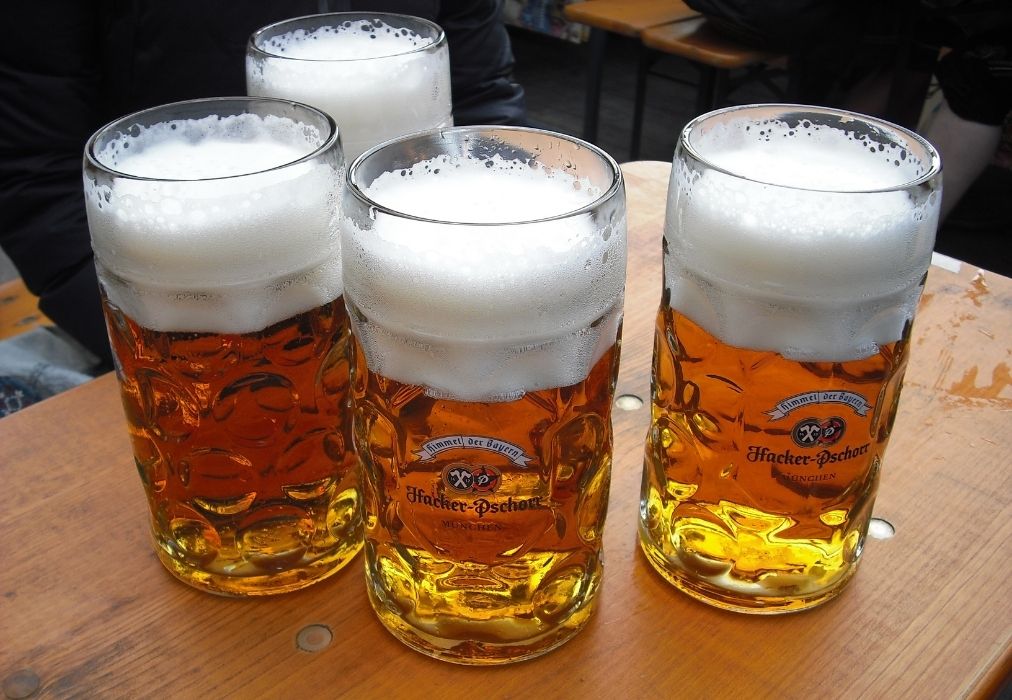
It would be impossible to go to Germany without trying one of these iconic German beverages:
Beer
Archeological findings suggests that beer brewing has been a part of present-day Germany’s history since long before the Middle Ages, with German monks and monasteries in Bavaria producing some of the highest quality beer at this time, and being the first to add hops to preserve the beer – a quintessential ingredient in beer today.
But what makes beer so rooted in German culture and history, is Germany’s “Reinheitsgebot”, or Beer Purity Law, enacted in 1516 by Duke Wilhelm IV of Bavaria who decided that beer can only be made with water, barley and hops, with yeast being added to the list afterwards, and forever changing the beer industry globally.
The industrial revolution streamlined the production and transportation of beer logistically, while this time saw an increase in beer gardens and halls, promoting beer socially.
With the Hofbraühaus tavern being established in Munich in 1589, and the first Oktoberfest happening in 1810, beer is a cornerstone in German culture and is a must-have while in the country.
We really hope you like beer if you are visiting Germany because it’s impossible to visit without at least participating or being a part of the country’s drinking culture and love for beer.
From pilsners, lagers, and kölsches, you have to try Germany’s iconic Berliner, Augustiner and Paulaner beers and explore Germany’s strong beer culture in Bavaria at their beloved beer halls or festivals.
Wine
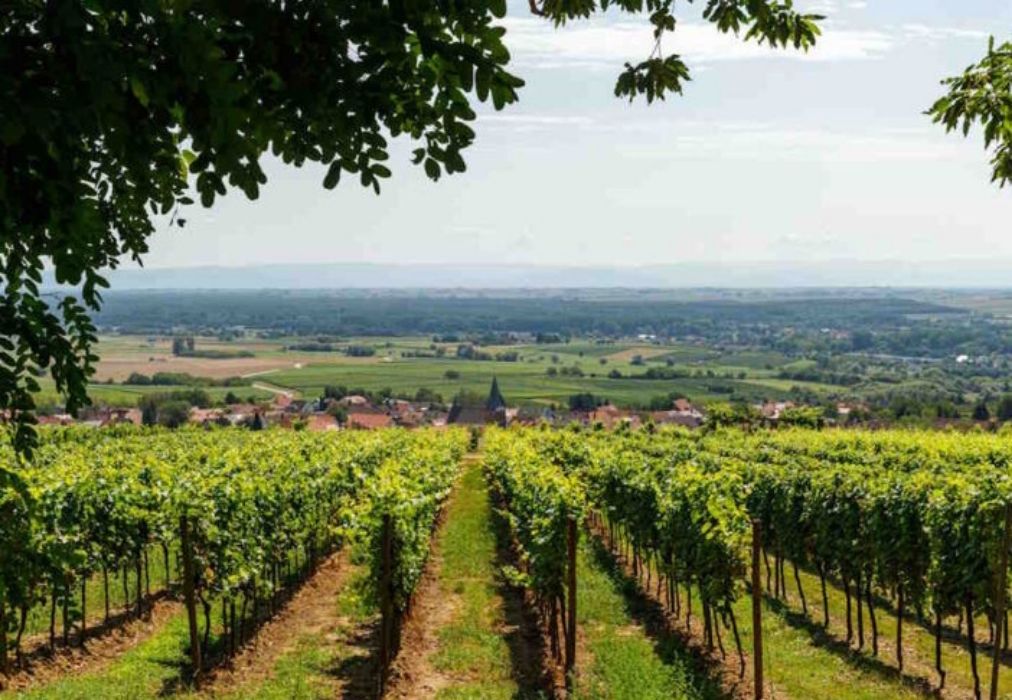
Germany is also world-renowned for its wines, and boasts some gorgeous wine regions for visitors and locals alike to explore.
From Mosel, famous for producing the typically sweet, light and acidic Riesling, to Rheingau and its love for Spätburgunder pinot noir, the wine in Germany is a crucial part to a gastronomical experience in Germany.
For something bubbly, Sekt is Germany’s sparkling wine, and just like champagne or prosecco, you can find a varietal to your tastes from super dry to very sweet.
Other drinks to try in Germany
Besides beer and wine, Germany is famous for several other drinks that you should try on your trip.
- Schnapps: A distilled (and rather strong) spirit made primarily from fruits or herbs and served as a digestif. Bavaria is known for its traditional fruit schnapps, while the Black Forest region specializes in herbal schnapps, but no matter where you are in Germany, you’ll be able to finish off your yummy and hearty meals with a sweet liquid treat.
- Jägermeister: Jäger is a potent liqueur from the Lower Saxony region of Germany made with a blend of 56 different herbs, fruits and spices. Made originally for medicinal purposes in 1934, it’s still drank as a digestif and more internationally popular, as a controversial drop shot with Red Bull known as the “Jäger Bomb”.
- Glühwein (mulled wine): A Christmas Market classic, Glühwein is a spiced mulled wine that is served warm during the winter months. You’ll typically find it flavored with cinnamon, cloves and an orange-like citrus to keep you nice and toasty as you explore through the charming rows of decorations, crafts and gifts at the christmas markets that pop up all over Central Europe during the holidays.
- Radler: If beer is not totally your thing, you need to try the next best thing, radler, a light beer like a pilsner typically mixed with a lemon-lime soda like 7Up or Sprite, or just lemonade. It’s delicious, refreshing, and won’t get you as tipsy as a whole maß of bier will, so you can properly enjoy all of the traditional beer festivities longer.
- Spezi: The German take on Coca-Cola infuses cola with an orange soda, and is the perfect refreshing summer drink for people of any age! Remember to return your Spezi bottle for the Pfand, a deposit refund for recycling!
- Apfelwein: Apple cider with a more tart and fermented flare that you can find in more traditional pubs.
- Kaffee Kirsch: This sweet coffee cocktail includes a splash of kirsch, a cherry schnapps, which is the same liqueur that goes in the delicious Black Forest Cake!
German media and literature
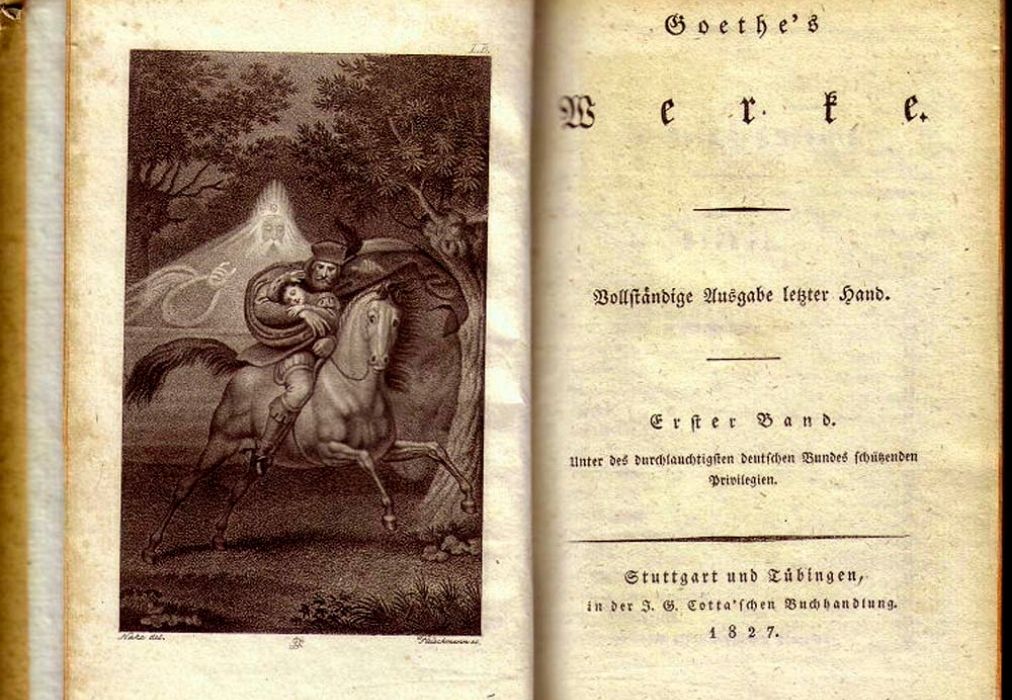
Germany has been called the land of Dichter und Denker (poets and thinkers), and it’s no wonder some amazing literature has come out of this country.
Below is a list of a few books you should read and movies or TV shows you should watch to better understand Germany’s history and culture.
Books based in or about Germany
There are many books that are set in the country or about it and below is our selection to get you prepared for a trip and better versed in the local culture:
- “The Diary of a Young Girl” by Anne Frank: One of the most famous books in history, Anne Frank’s diary details her innocent perspectives on life in hiding with her Jewish family in Nazi-occupied Amsterdam during World War II.
- “The Book Thief” by Markus Zusak: Set in Nazi Germany, Liesel Meminger steals books as a means of escape, comfort and rebellion, narrated by the unique perspective of Death itself during a time of great loss. You can also watch the movie.
- “They Divided the Sky” by Christa Wolf: This novel, published in 1963, follows Rita and her partner Manfred who are not only divided by political beliefs but by the Berlin Wall. The book became quite a scandal on its release, but Wolf went on to become East Germany’s best known writer.
- “All Quiet on the Western Front” (Im Westen nichts Neues) by Erich Maria Remarque: Told from the perspective of a young German soldier during World War I, this novel explores grappling with the traumatic realities of war and trench warfare that many young and proud men experienced volunteering to serve for the Fatherland.
- “Faust” by Johann Wolfgang von Goethe: As one of Goethe’s most famous plays, this tragedy follows Dr. Faust as he makes a deal with the devil in exchange for unlimited knowledge and pleasure, exploring what the meaning of life really is.
- “Night” by Elie Wiesel: Memoir of Elie Wiesel’s lived experiences as a teenager in a Nazi concentration camp, having survived the Holocaust and conceptualizes the death of his loved ones, his innocence and his faith in humanity.
- “A Woman in Berlin” (Eine Frau in Berlin) by Marta Hillers: Originally published anonymously in 1959, this diary depicts the experiences of a woman in Soviet-occupied Berlin and she tries to survive the final days of World War II.
- “Grimms’ Fairy Tales” by Jacob and Wilhelm Grimm: Published in the 1800s, the Grimm brothers are responsible for authoring some of the most famous fairy tales to date, like Cinderella, Snow White, Hansel and Gretel, Rapunzel, Rumpelstiltskin, Sleeping Beauty, Little Red Riding Hood, The Frog Prince and The Twelve Dancing Princesses.
- “All the Light We Cannot See” by Anthony Doerr: This interweaving story between a blind French girl, and an orphaned German boy who enrolls in Hitler’s Youth Academy navigates resilience, the uncertainties of life and coming of age during the Second World War.
- “The Tin Drum” (Die Blechtrommel) by Günter Grass: Oskar Matzerath decides to stop growing up at the age of three, as a way to rebel against the chaotic “adult world” during the rise of Nazism and World War II.
Movies or TV shows based in or about Germany
Besides books, there are also many interesting movies set in Germany or about the country.
- “Good Bye Lenin!” (2003): This dramatic comedy is about a young man who creates a fake television network for his East German socialist mother after she falls into a coma right before the fall of the Berlin Wall, to protect her from the shock of German reunification.
- “The Boy in the Striped Pajamas” (2008): One of the most tragic and sad but important movies of all time, this film follows Bruno who becomes friends with a Jewish boy in a concentration camp near his home. Make sure you have tissues when you watch this film.
- “Downfall” (2004): A historical drama showcasing Hitler’s last days within his bunker, and the dedication the German people had to the Third Reich specifically through the eyes of Hitler’s secretary, Traudl Junge.
- “The Last Days” (1998): This emotional and eye-opening documentary on the Holocaust explores the stories of five Hungarian-Jewish Holocaust survivors.
- “Never Look Away” (2018): Constantly described as one of the best movies people have ever seen, this coming-of-age romantic drama follows an artist that falls in love after escaping from East Germany, and navigates his traumatic past in the GDR.
- “Bridge of Spies” (2015): Based on true events, starring Tom Hanks and directed by Steven Spielberg, this film tells the story of a lawyer tasked to negotiate a prisoner exchange between the US and the Soviet Union during the Cold War.
- “World War II: From the frontlines” (2023): This docuseries on Netflix uses real footage to move along the story with an in-depth explanation of World War II from the perspective of soldiers, civilians and those affected by the most devastating war in human history.
- “The Danish Girl” (2015): Based on the true story of Lili Elbe, The Danish Girl explores Lili’s life and self-discovery leading up to her gender confirmation surgery, the first of its kind where she traveled to Dresden, Germany to make it happen.
- “Jojo Rabbit” (2019): Jojo Rabbit is a satirical movie about a German boy growing up in Nazi Germany idolizing Adolf Hitler. When Jojo discovers that his mother is hiding a Jewish girl in their home, he grapples with the realization that the Jewish propaganda he has been told might not be true, and questions the war and Hitler’s beliefs, who appears throughout the film as Jojo’s imaginary friend.
